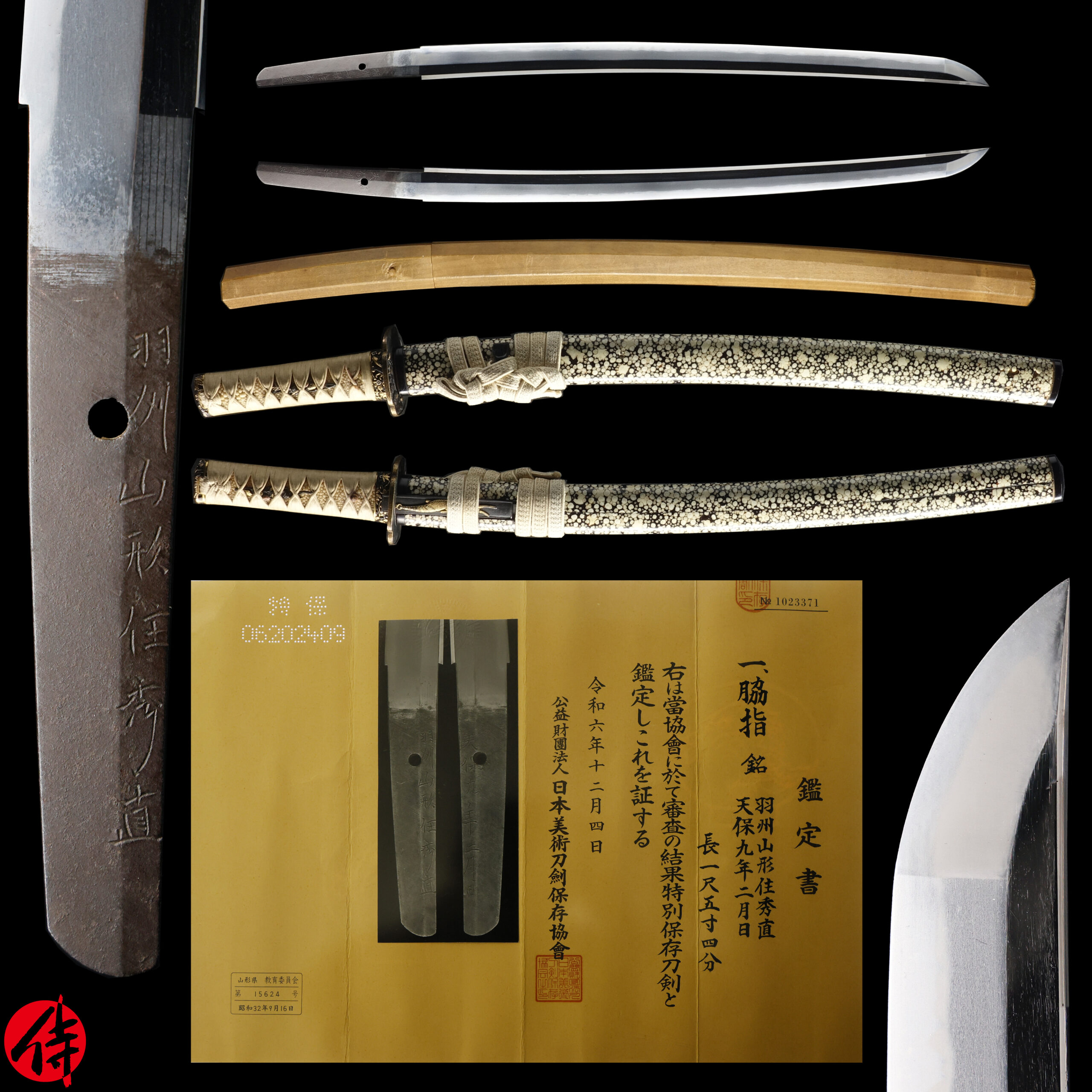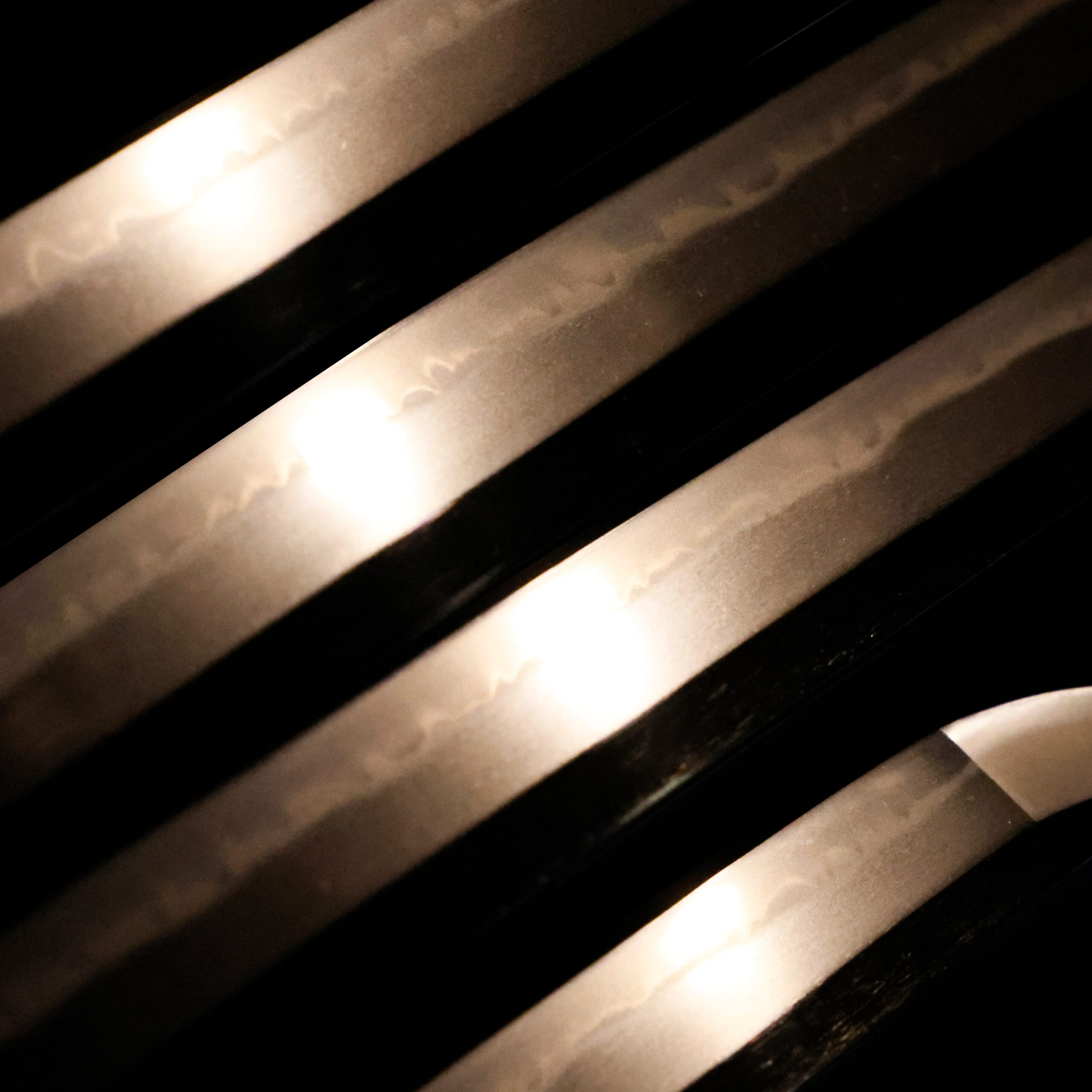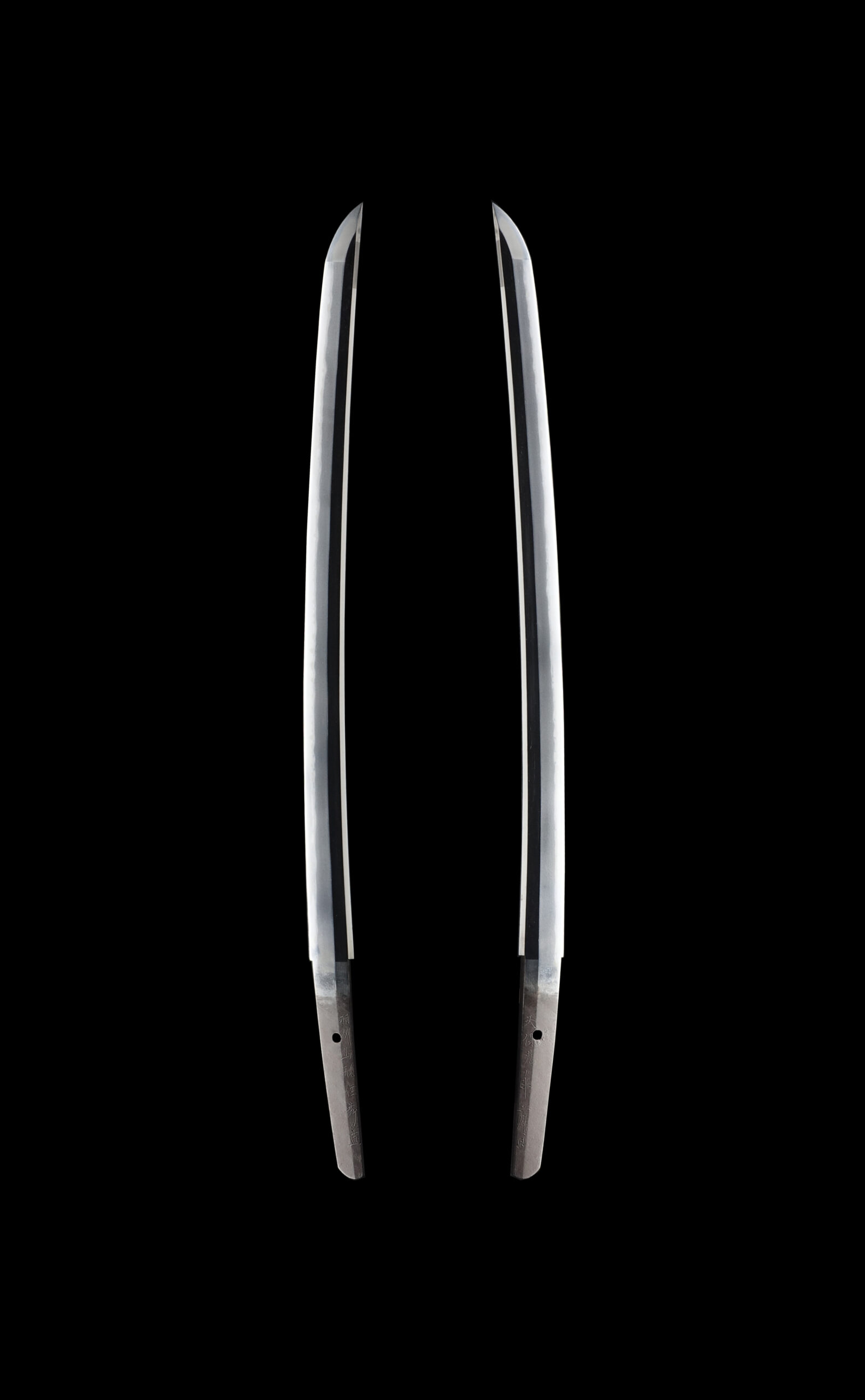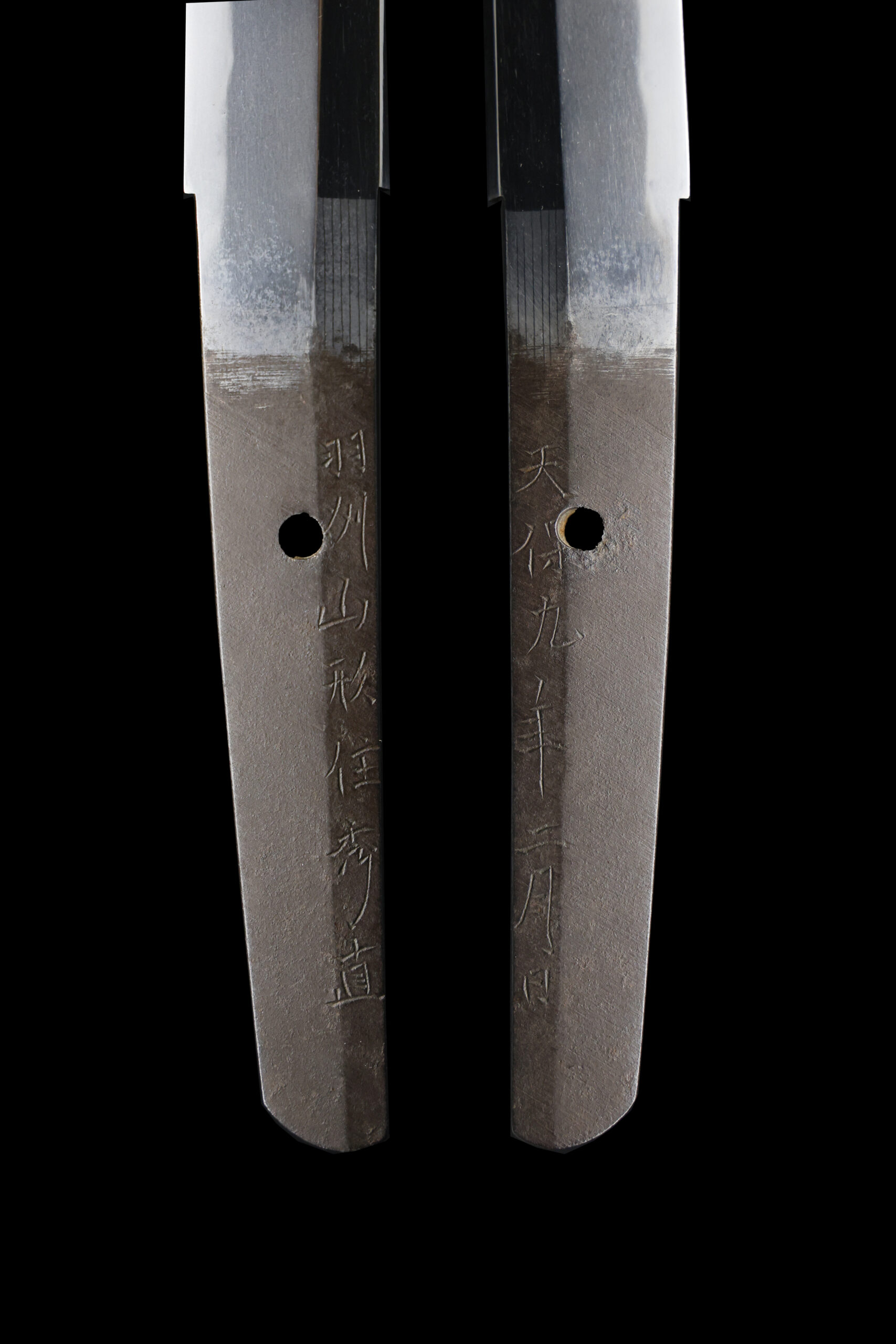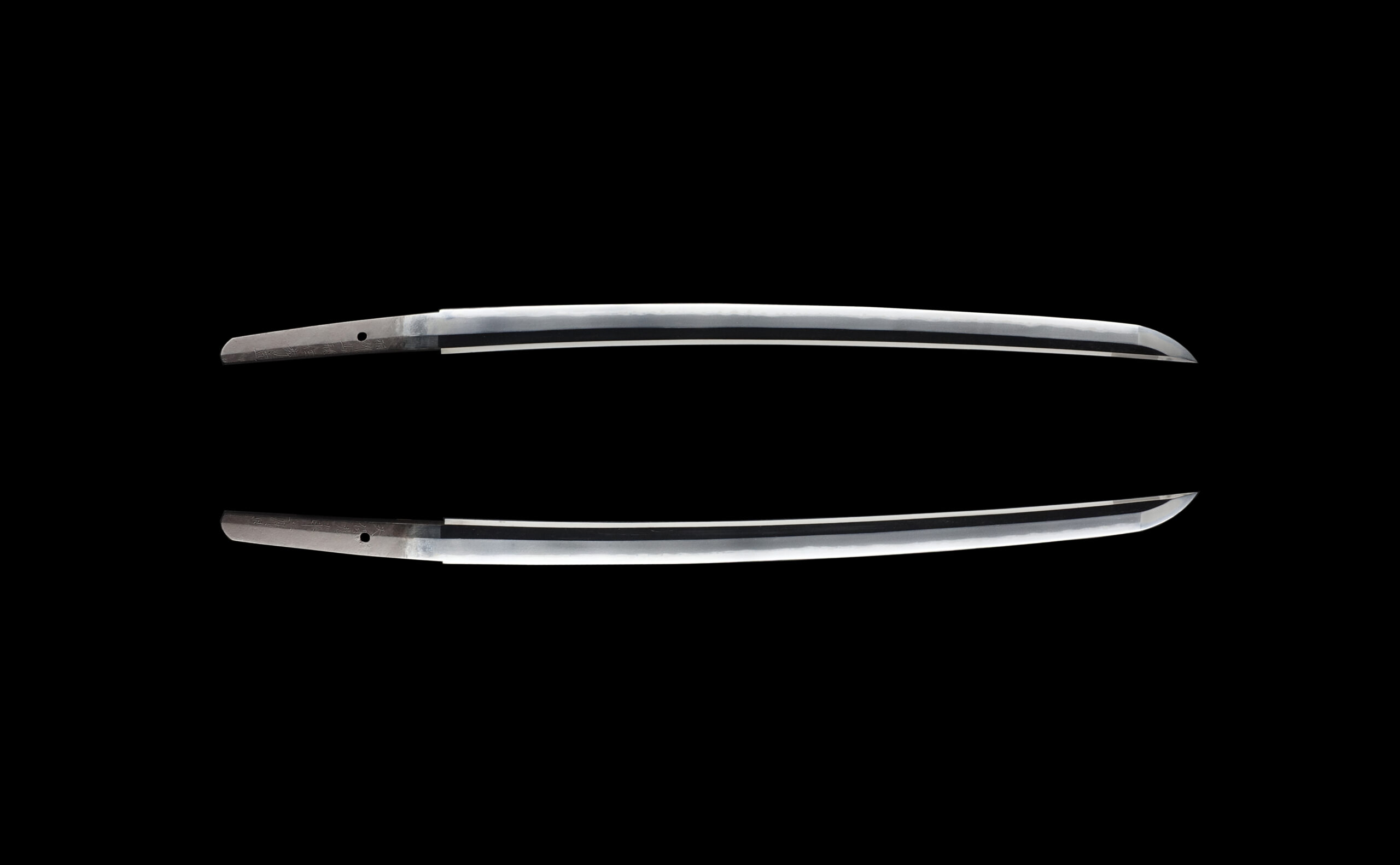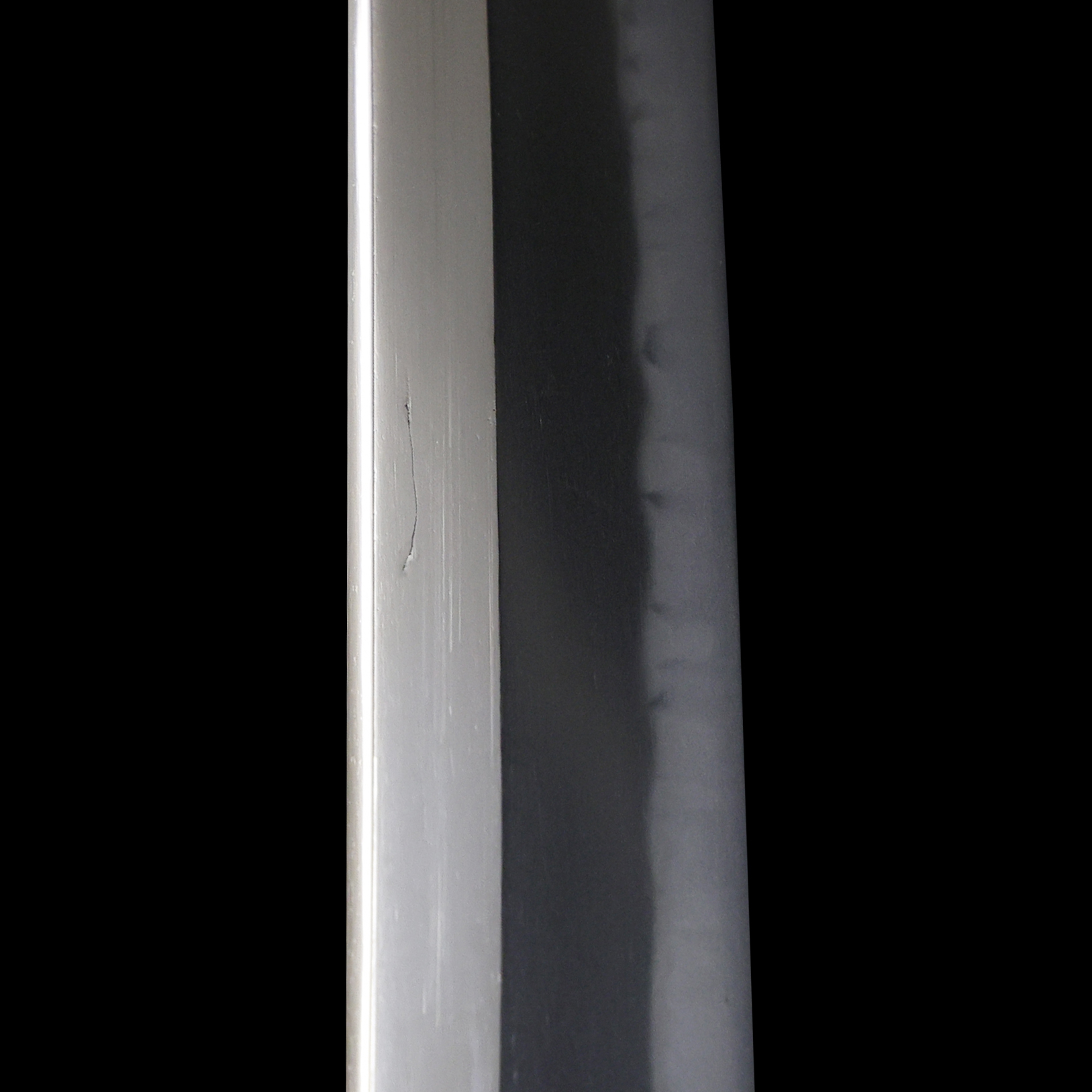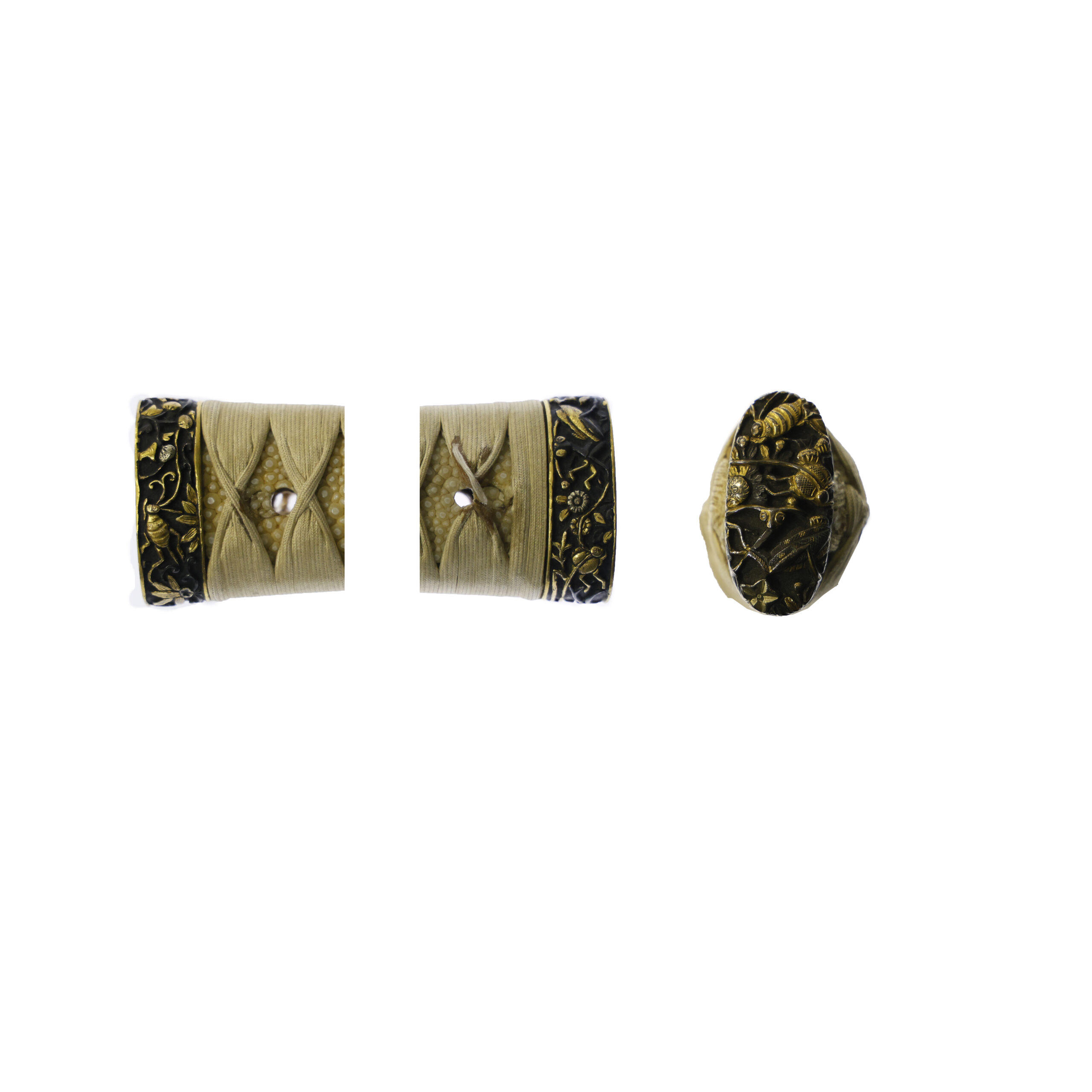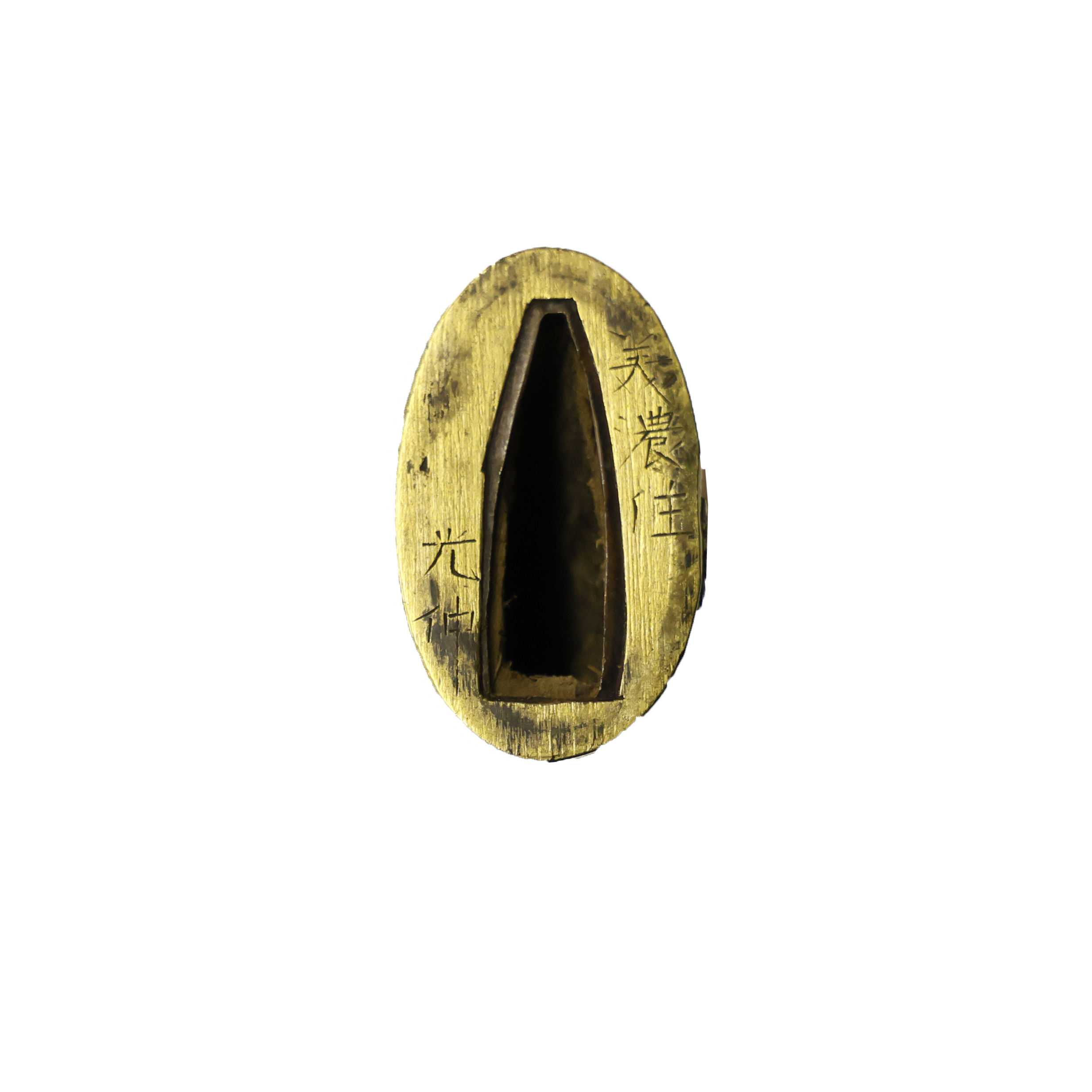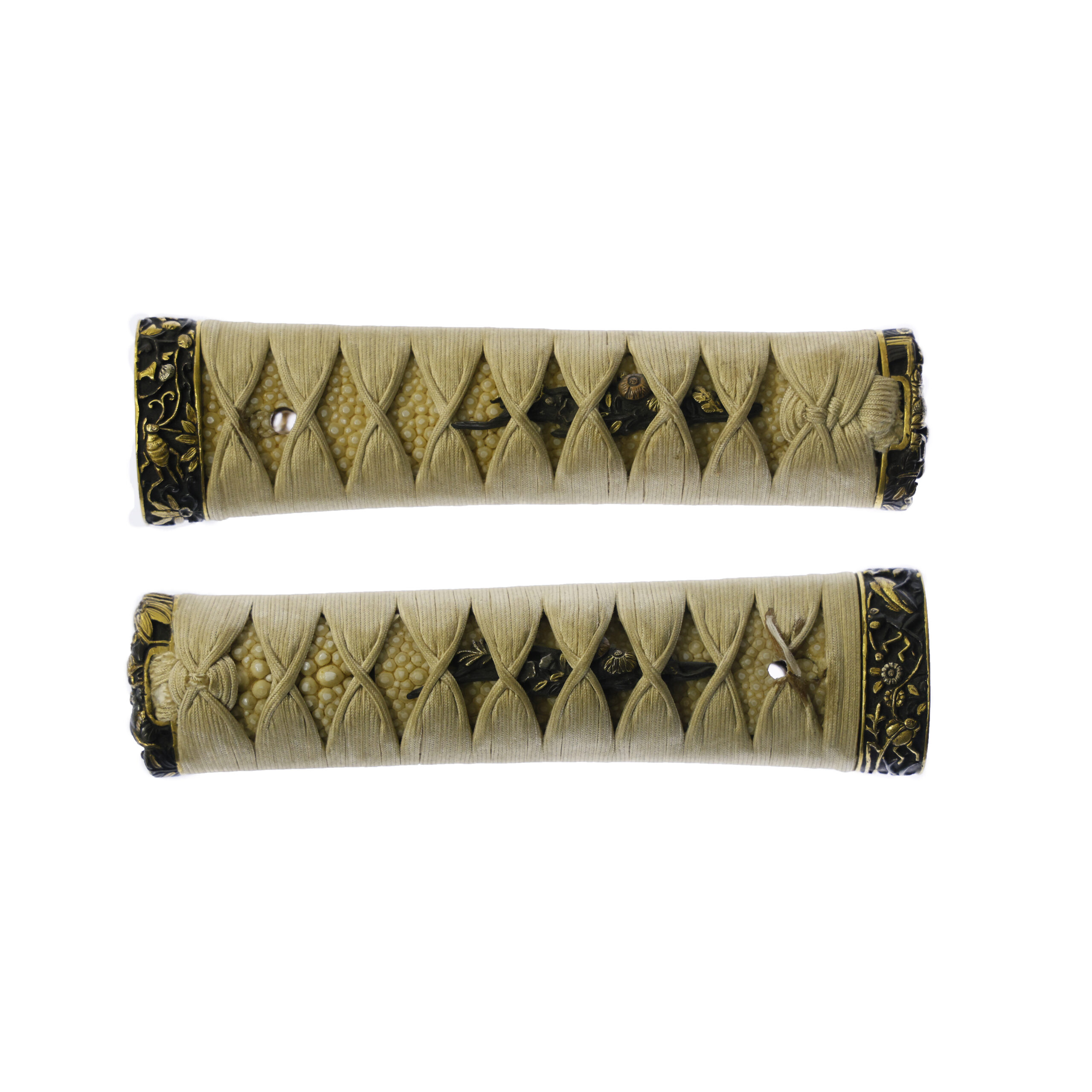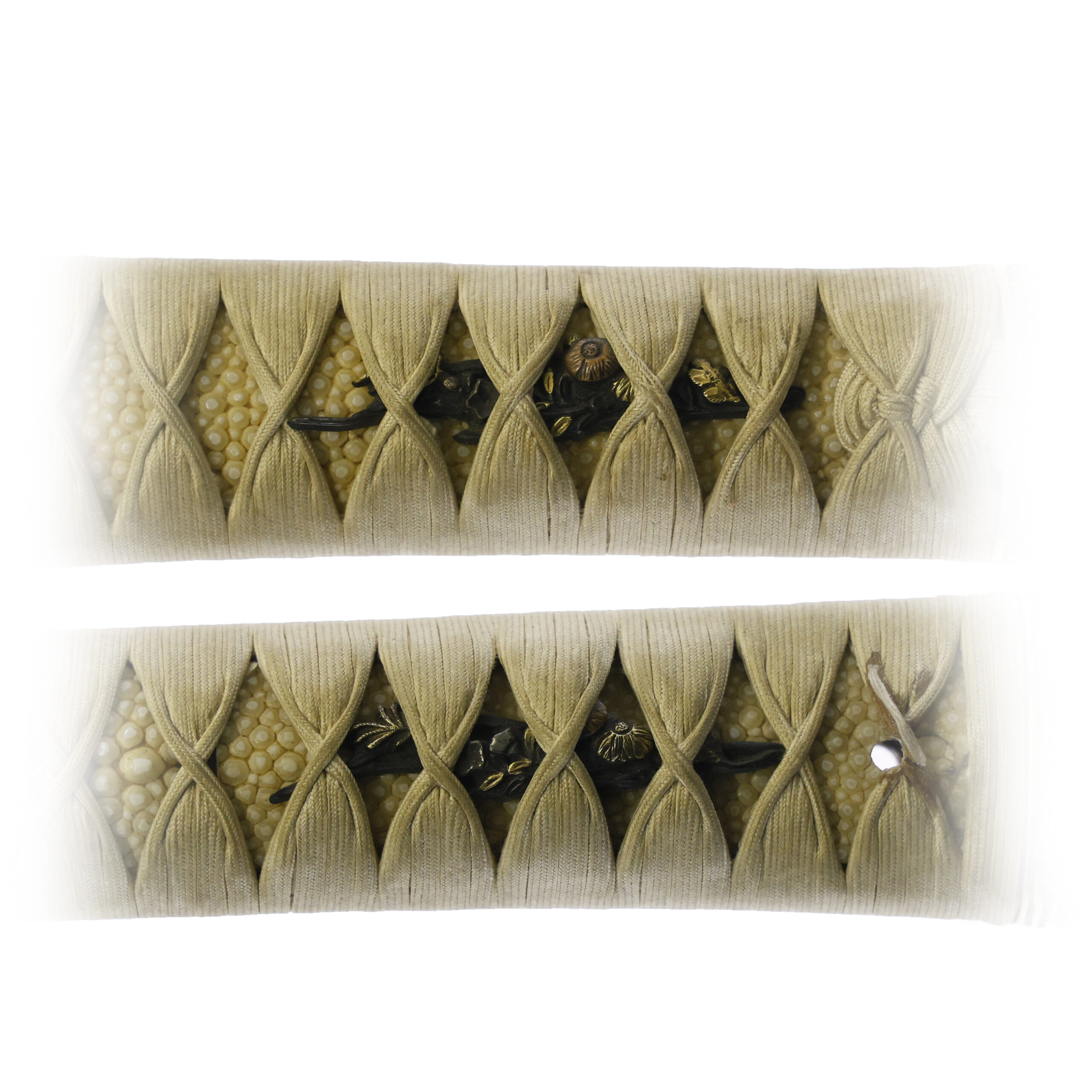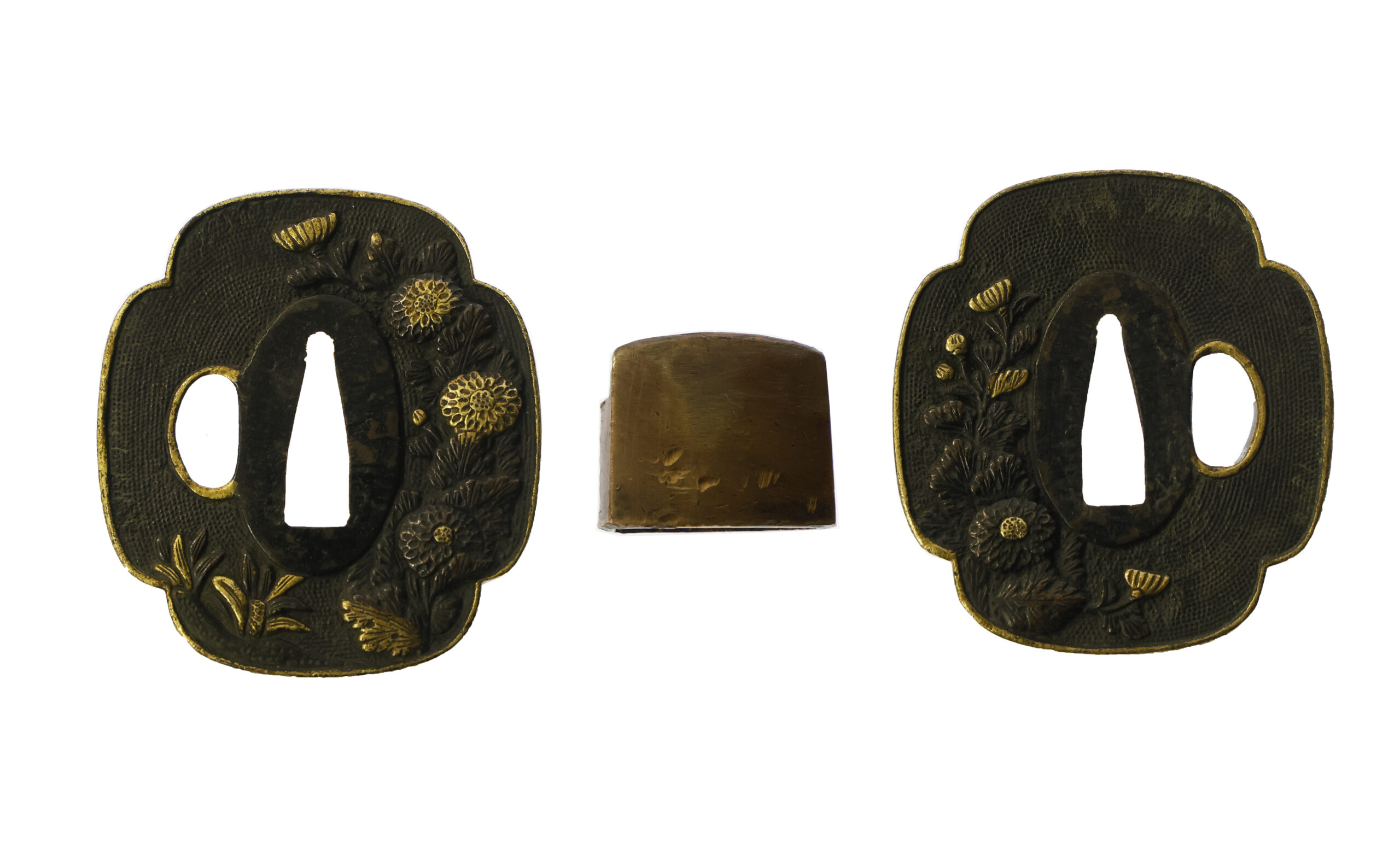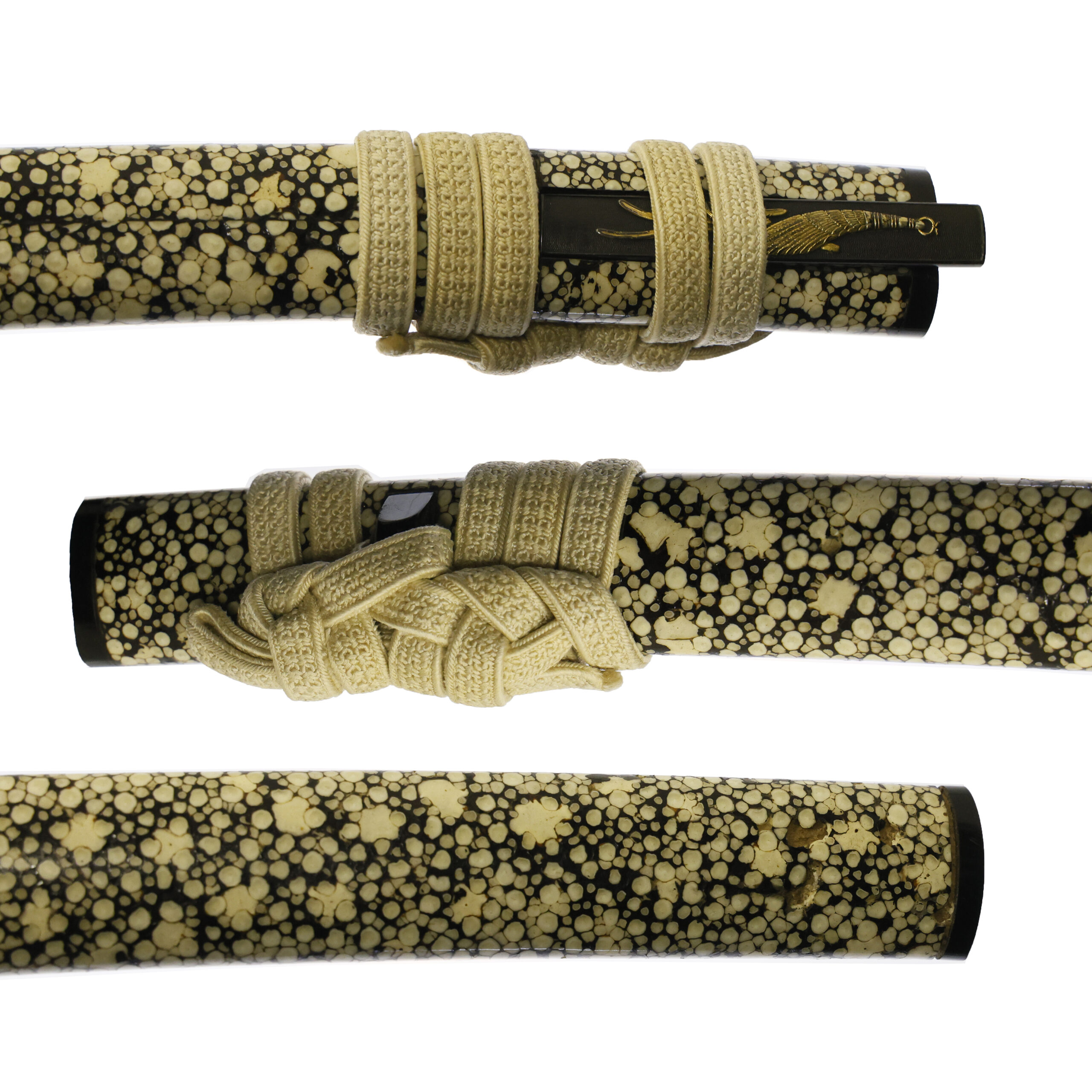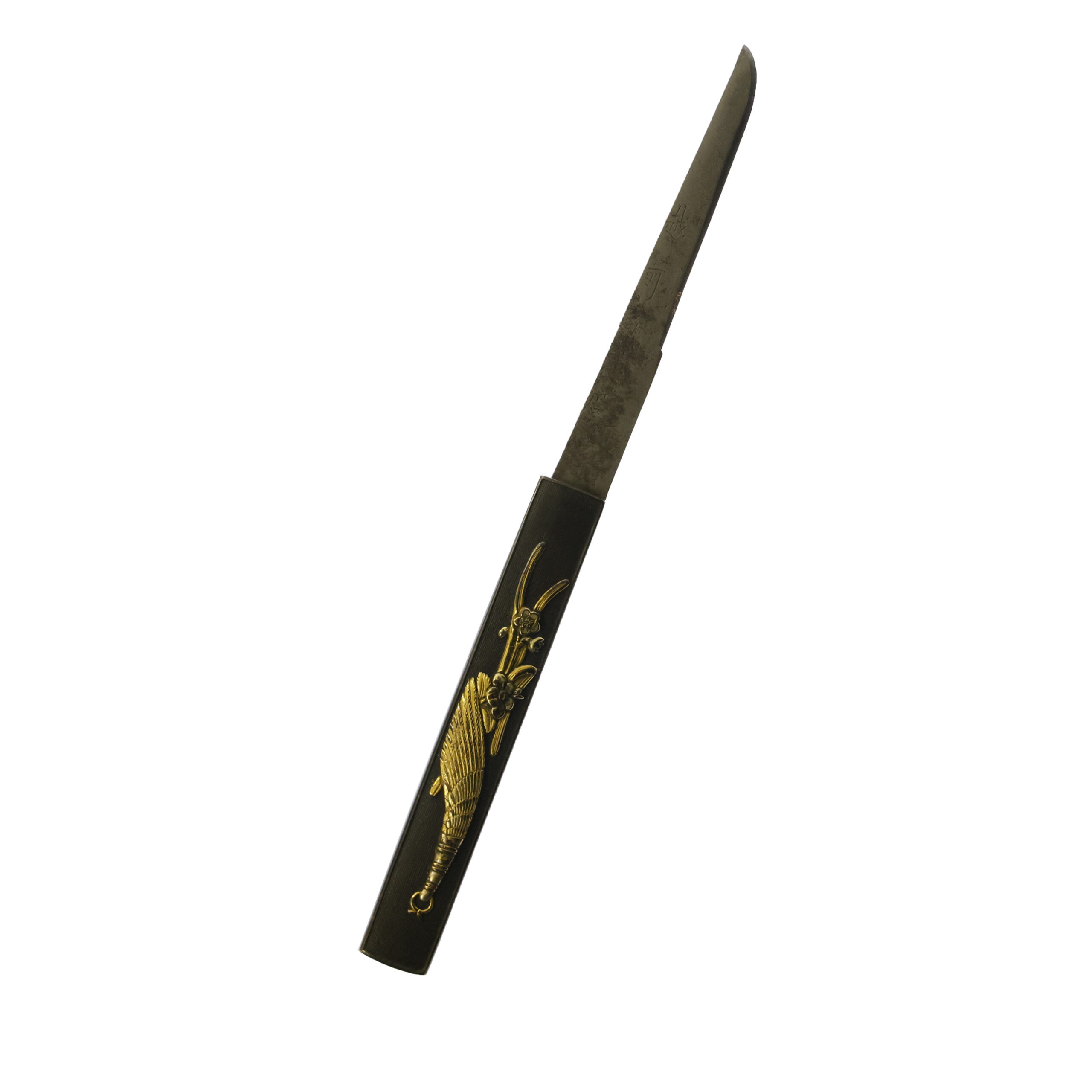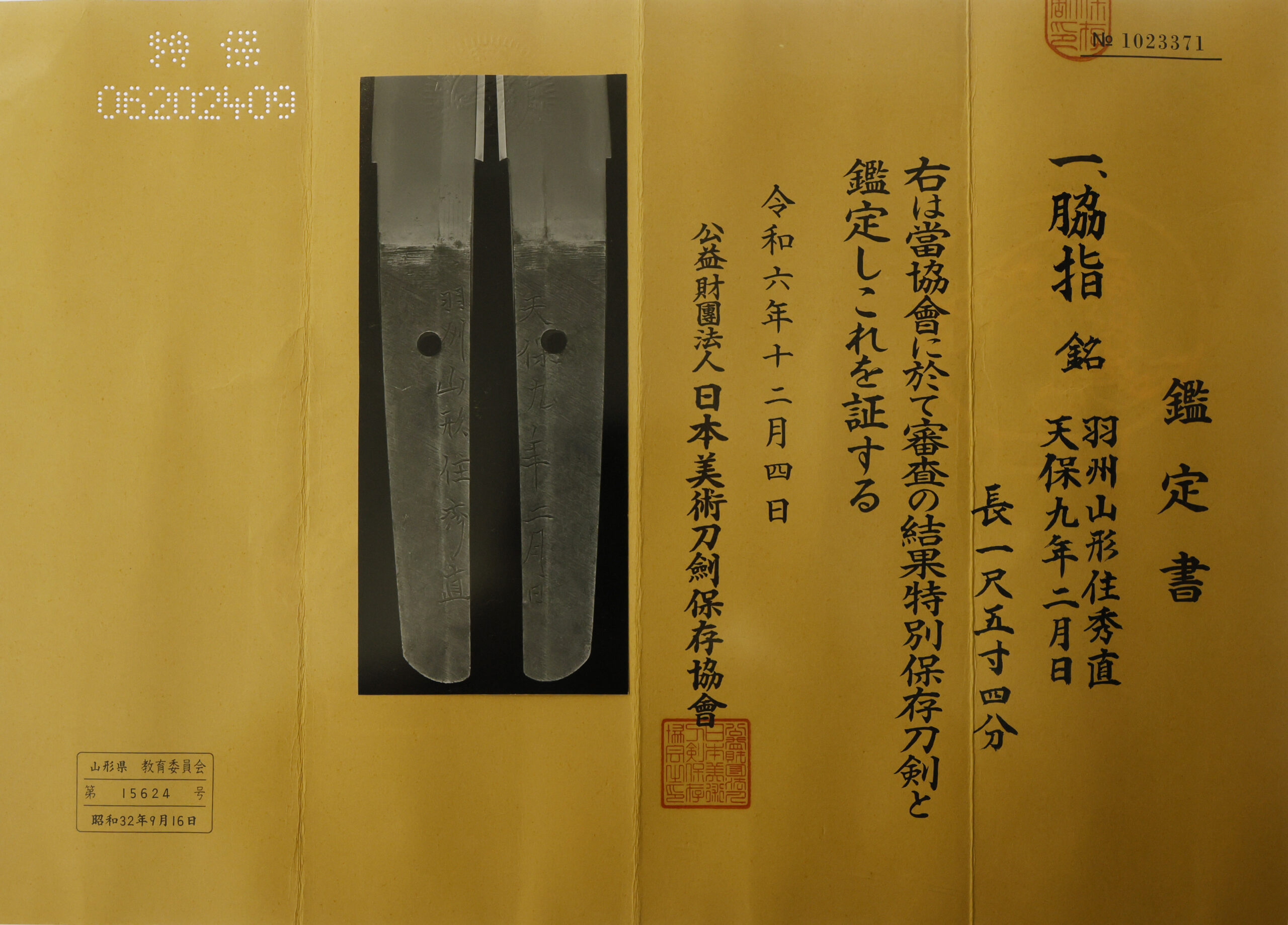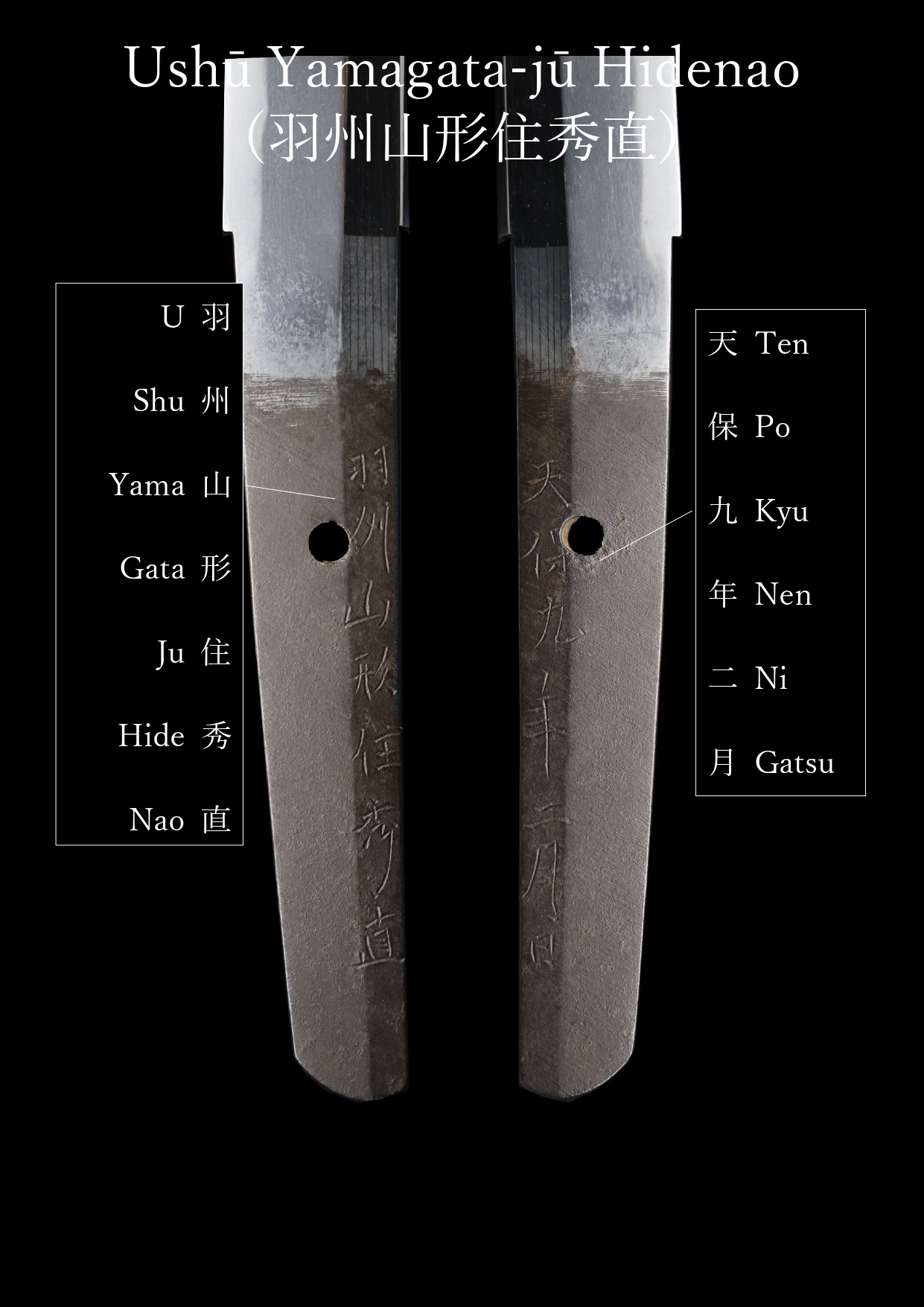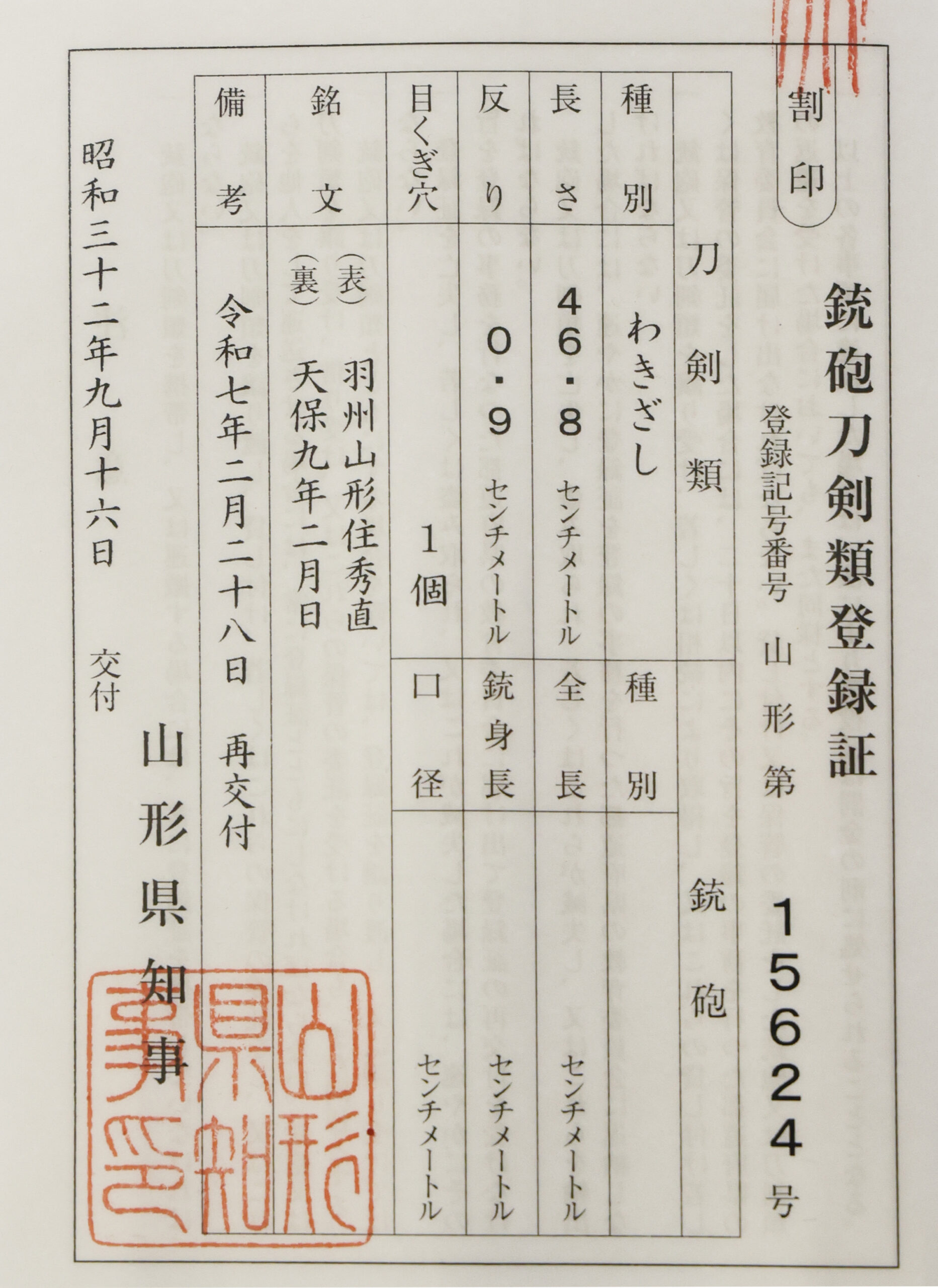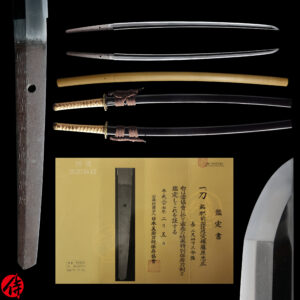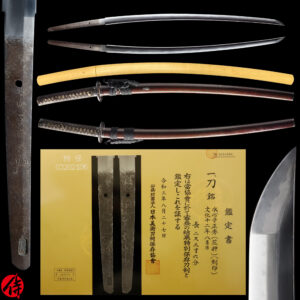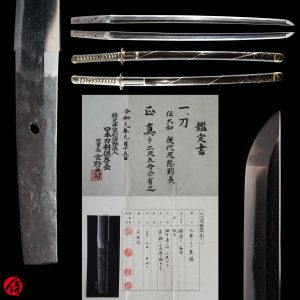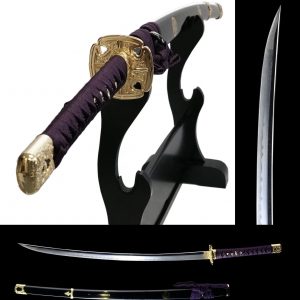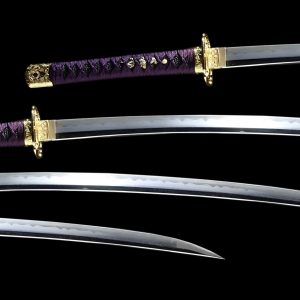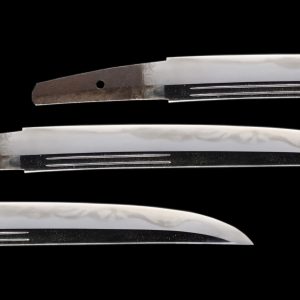Antique Japanese Sword Wakizashi Signed by Hidenao with NBTHK Tokubetsu Hozon Certificate
【Description】
This wakizashi bears the inscription Ushū Yamagata-jū Hidenao (羽州山形住秀直) and, according to the NBTHK certificate, was forged in February of Tenpō 9 (1838).
Hidenao was a native of Dewa Province (present-day Yamagata Prefecture) whose personal name was Yamamoto Kadenji (山本嘉伝次). He was a senior disciple of the celebrated master Taikei Naotane (大慶直胤), and later, like his teacher, was granted the honorific titles Chikuzen Daijō and Mino no Suke. In Naotane’s later years, Hidenao is said to have even produced blades on his master’s behalf.
Hidenao was also renowned as the teacher of Hakushū Hideharu, whom he instructed in Edo for five years. Hideharu went on to become one of the foremost swordsmiths of the Shinshintō era, famed for producing exceptionally sharp cutting blades (wazamono). This makes Hidenao the origin of Hideharu’s distinguished lineage. Despite his high reputation, Hidenao’s works are rarely seen on the market. This piece is therefore a valuable example of his craftsmanship and style, and an irreplaceable sword for regions connected to him, such as his native Dewa and Hakushū.
About Taikei Naotane
Taikei Naotane (大慶直胤, 1778–1857) is regarded as one of the greatest masters of the Shinshintō period and was ranked Saijō-saku (supreme grade) by later appraisal. Serving under the Sendai domain, he was celebrated for his versatility, skillfully reproducing the styles of earlier great traditions such as Bizen, Sōshū, and Yamashiro. His blades are known for their powerful sugata (form), refined jigane (steel surface), and exquisite hamon (temper patterns), often rich in nie activity. Naotane’s works are highly prized by collectors for their beauty, technical excellence, and historical significance.
It is appraised as a Tokubetsu Hozon Token (特別保存刀剣) issued by NBTHK (Nihon Bijutsu Touken Hozon Kyokai: 日本美術刀剣保存協会). This authentication paper was only given to authentic Japanese swords, especially well preserved and high quality with artistic value.
*Please keep in mind that there are a couple of Kitae Kizu on this blade. If you like to know the detailed condition, please feel free to contact us.
【Blade】
Cutting Edge Length (Nagasa):46.8 cm (18.4 inches)
Curvature (Sori): 0.9 cm (0.35 inches)


Hamon:
The crystalline structure which forms along the cutting edge of a blade as a result of the hardening process.
Jimon(Jihada):
visible steel surface pattern created by folding and hammering during forging process
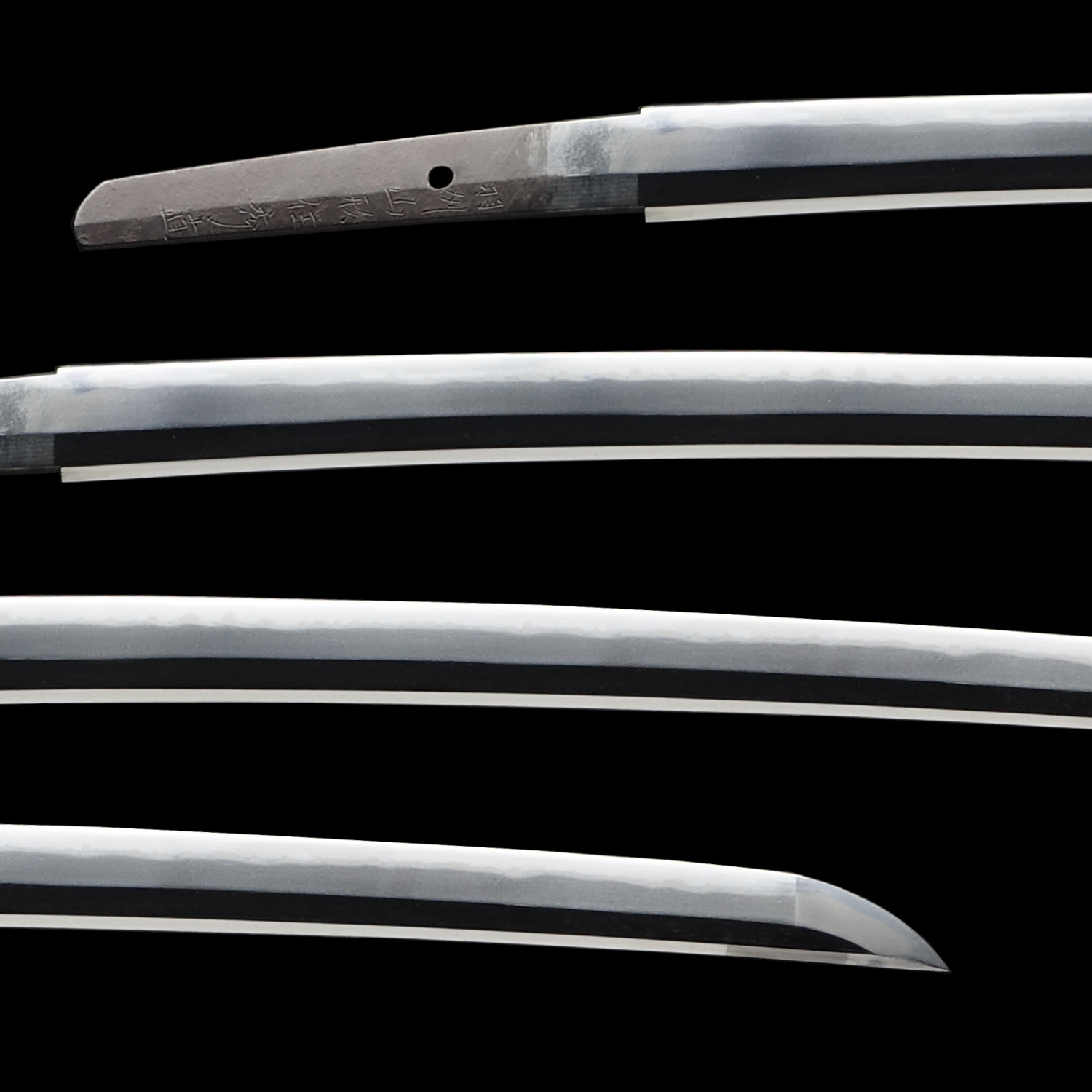

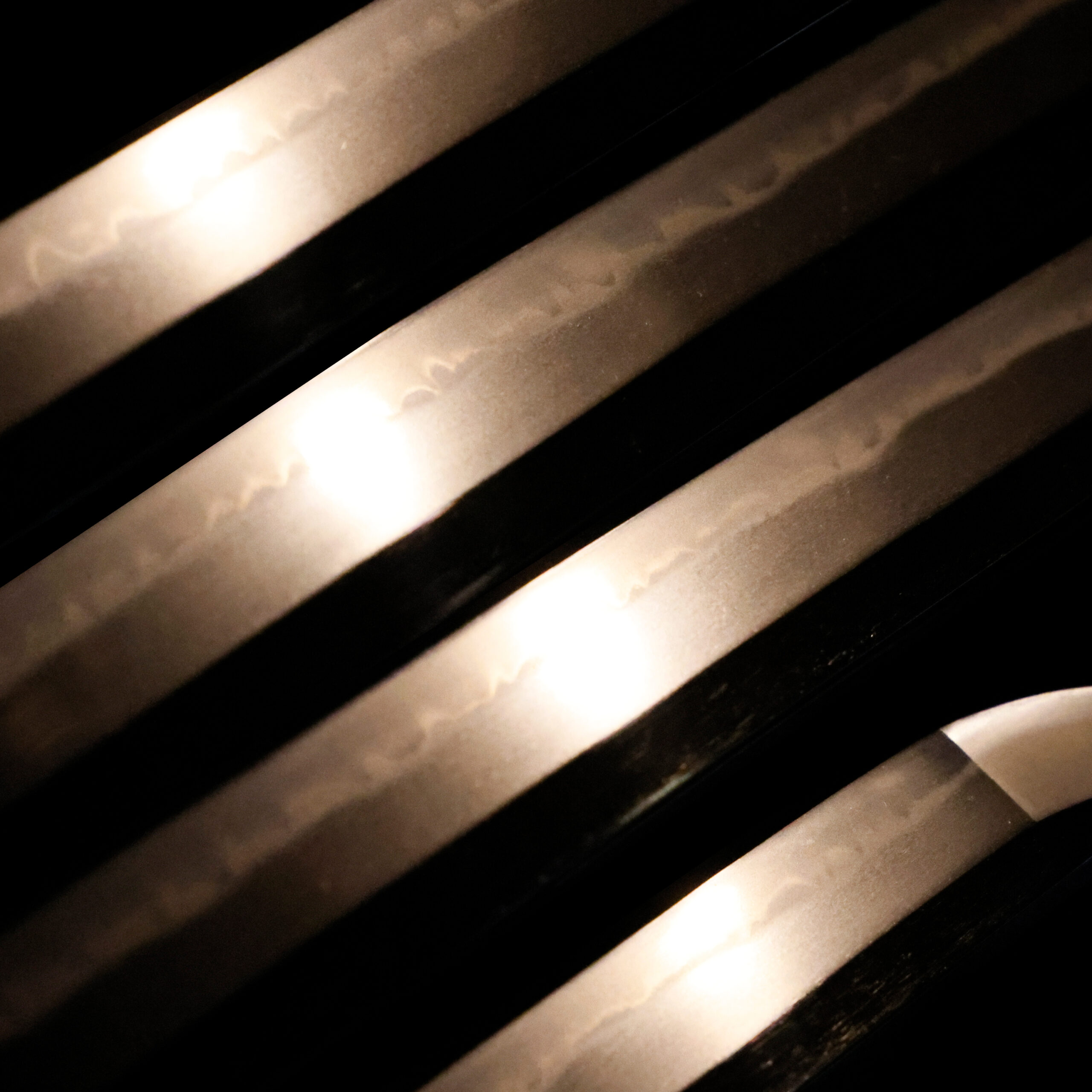
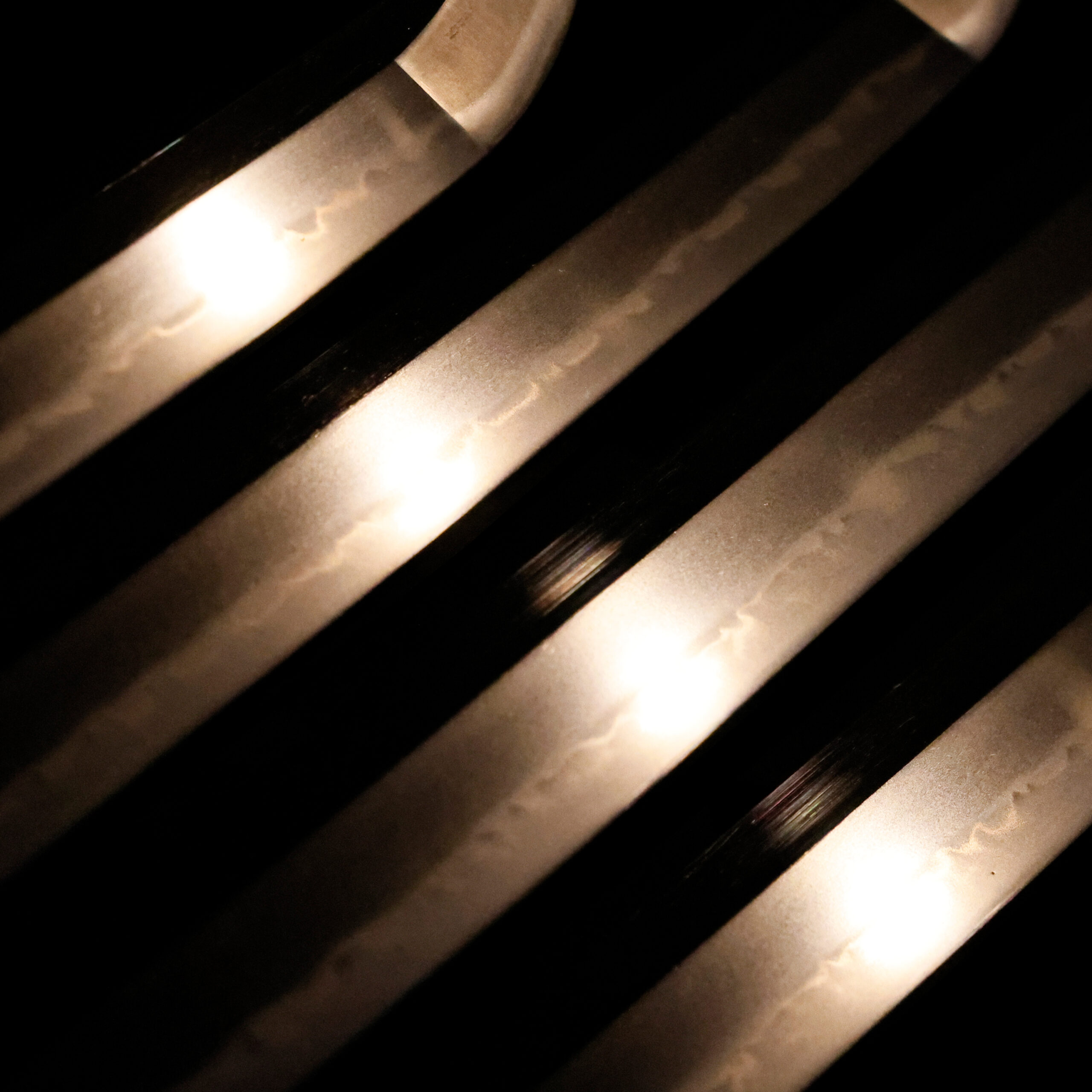
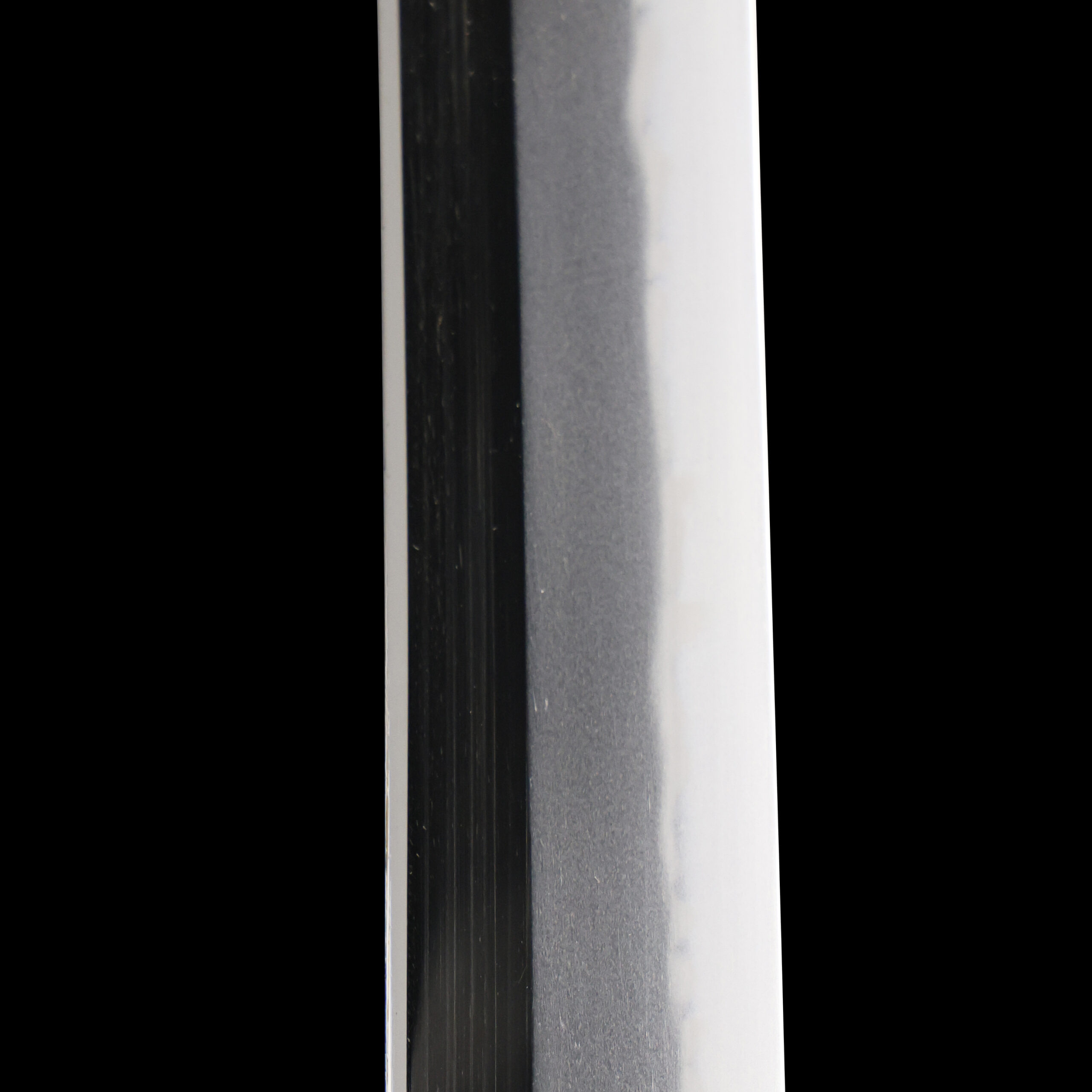
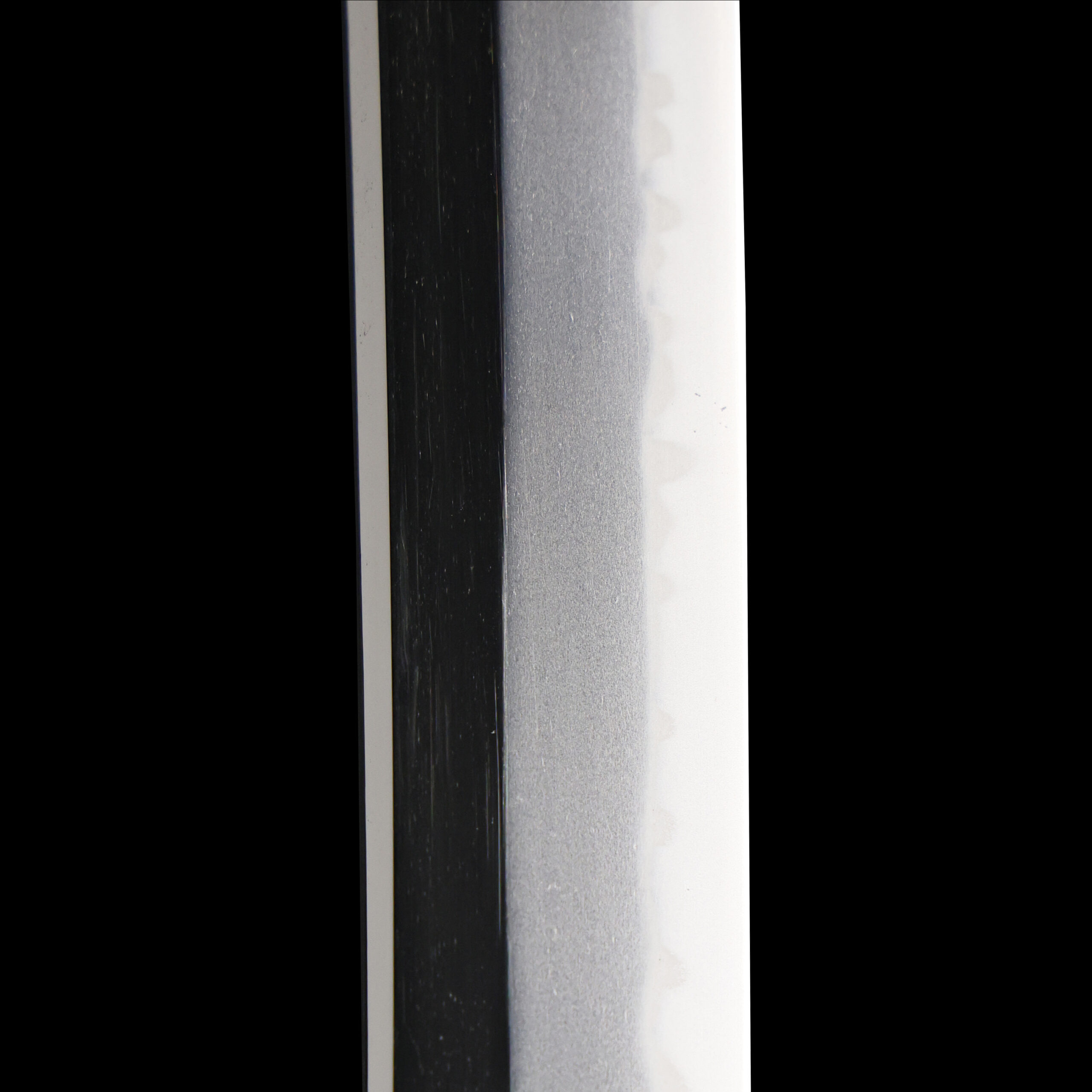
Kissaki: Kissaki is the tip of the Japanese sword.
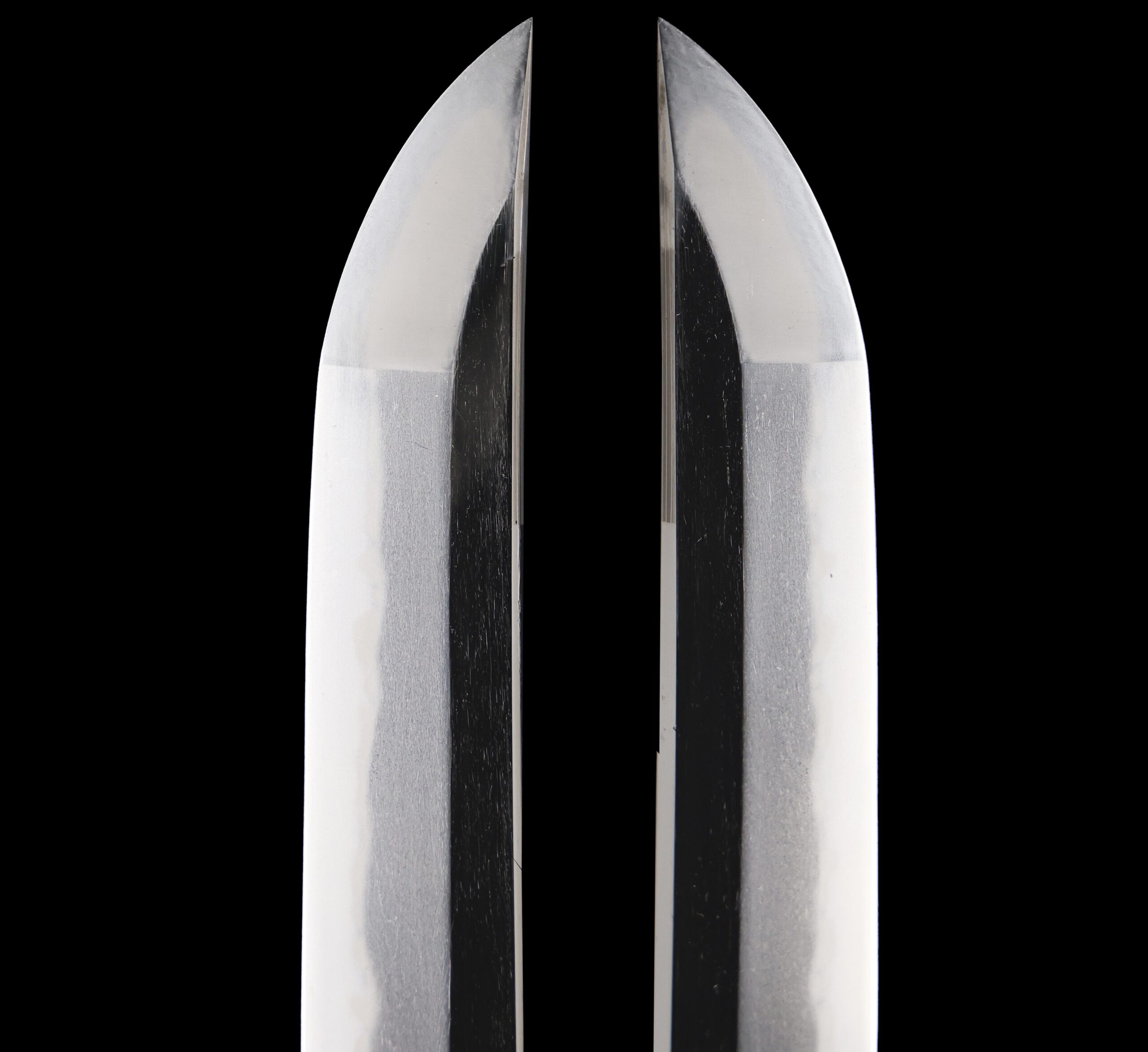
Nakago: Nakago is the tang of the Japanese sword.
Japanese swordsmiths left the black rust on the tang because it prevents red rust while the tang is in its handle. And the discoloration of the tang was created over time, and it is a great indicator for a Japanese sword specialist to estimate when the sword was forged.
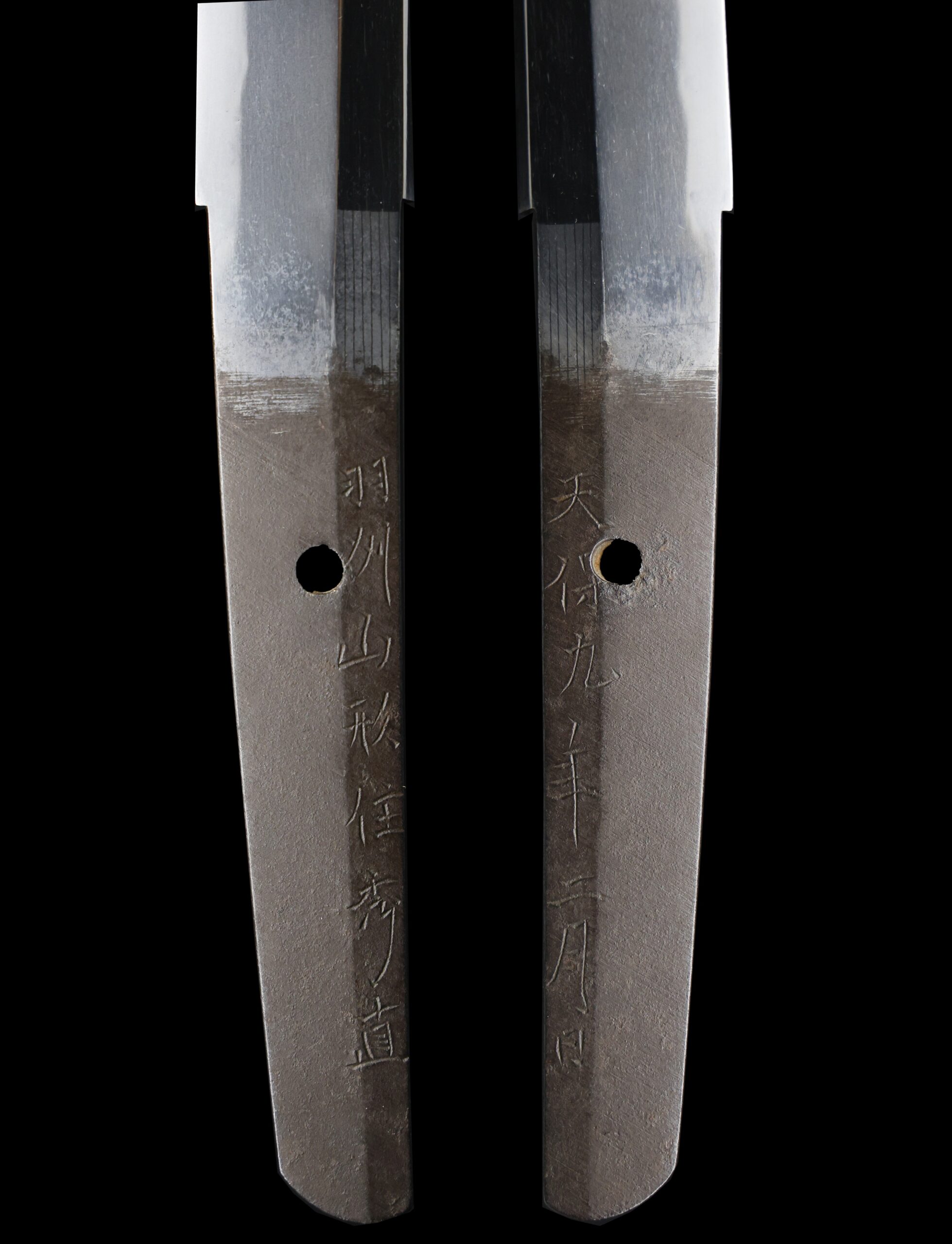
Koshirae:Koshirae is the mounting of the Japanese sword. There are several parts that consist of Koshirae such as Saya (Scabbard), Tsuka (Handle), Tsuba (Handguard).

Fuchi-Kashira:A pair of matching sword fittings that cover the upper and bottom parts of its sword hilt.
The design of this fuchi-kashira features crickets, an insect symbolic of autumn, depicted alongside akikusa (秋草, autumn plants).
In Japan, the clear chirping of crickets has long been celebrated in poetry and literature, cherished as a sound that conveys the beauty and gentle melancholy of the autumn season. Their song is also loved as a seasonal marker announcing the passage of time, and the sound of crickets echoing through a quiet night evokes a richly atmospheric image of the autumn landscape.
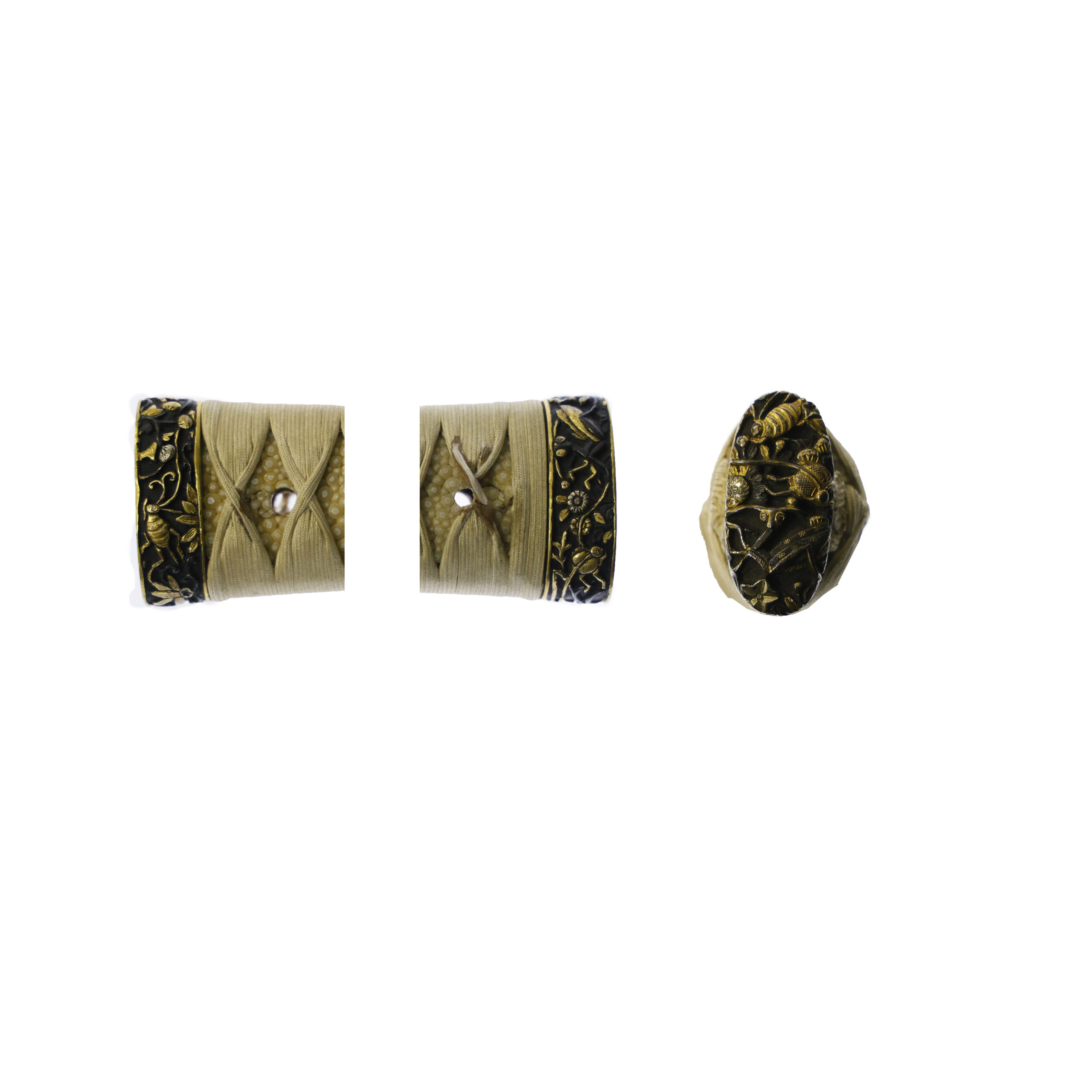
Tsuka and Menuki: Tsuka is the handle of the Japanese sword and Menuki is its decoration.
The motif of this menuki is akikusa (秋草, autumn plants), a traditional seasonal theme in Japanese art.
The term akikusa often refers to the “Seven Flowers of Autumn” (aki no nanakusa, 秋の七草): bush clover (hagi, 萩), pampas grass (susuki, 薄), bellflower (kikyō, 桔梗), dianthus (nadeshiko, 撫子), patrinia (ominaeshi, 女郎花), thoroughwort (fujibakama, 藤袴), and kudzu (kuzu, 葛). These plants have long been cherished as poetic symbols of autumn in Japan.
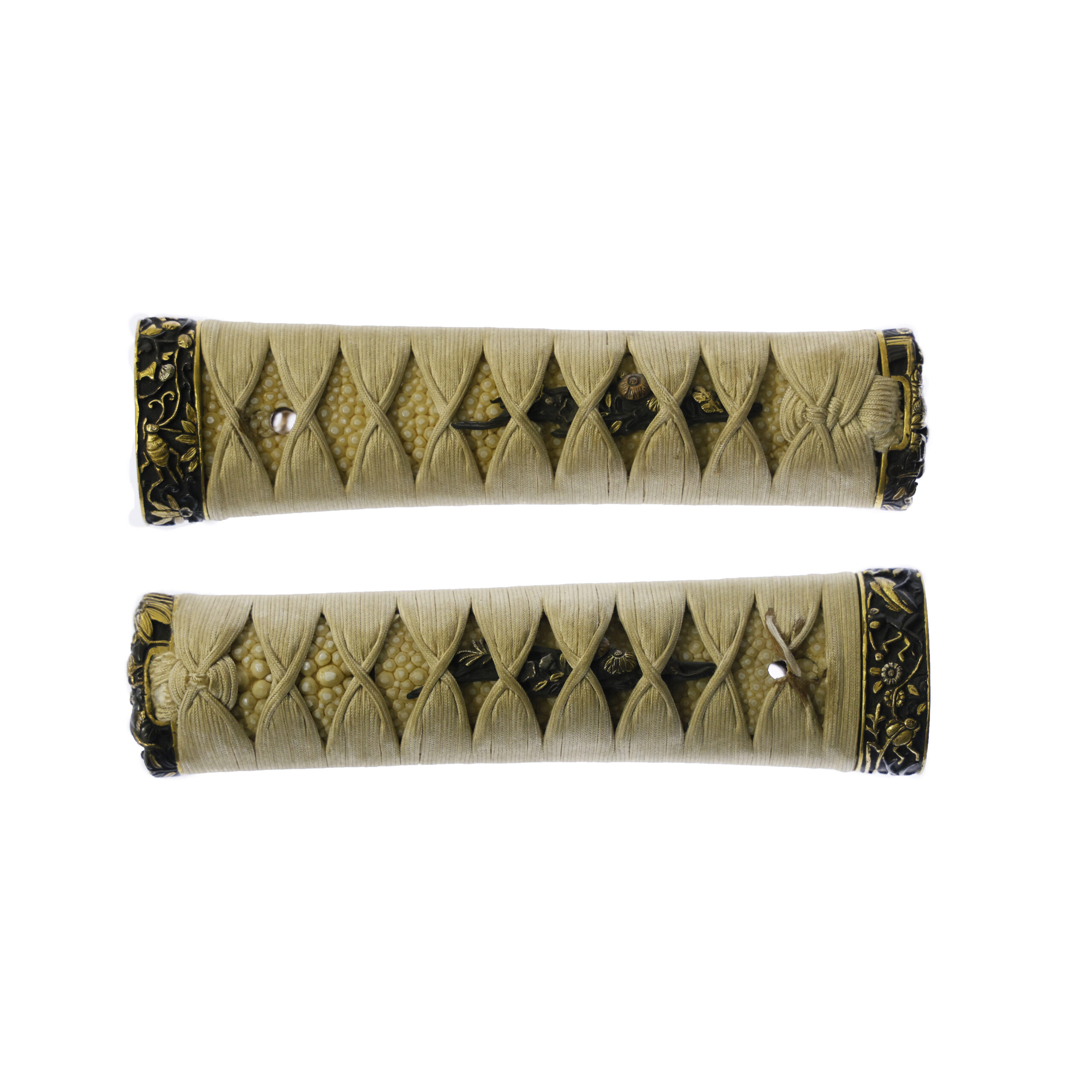

Tsuba and Habaki: Tsuba is the handguard for the Japanese Sword and Habaki is the equipment to make the blade not touch its scabbard inside. It prevents the blade from getting rusty and chipped.
The motif of this tsuba is the chrysanthemum (kiku, 菊), one of the most celebrated flowers in Japanese culture. Originating in China, the chrysanthemum was introduced to Japan during the Nara period (710–794) together with the belief that it possessed medicinal properties capable of promoting longevity. In Japan, the chrysanthemum symbolizes autumn and has been admired since ancient times for its refined beauty. Its petals, radiating outward in perfect symmetry, are likened to the rays of the sun. This solar imagery has made the chrysanthemum a symbol of perpetual youth, long life, and good health.
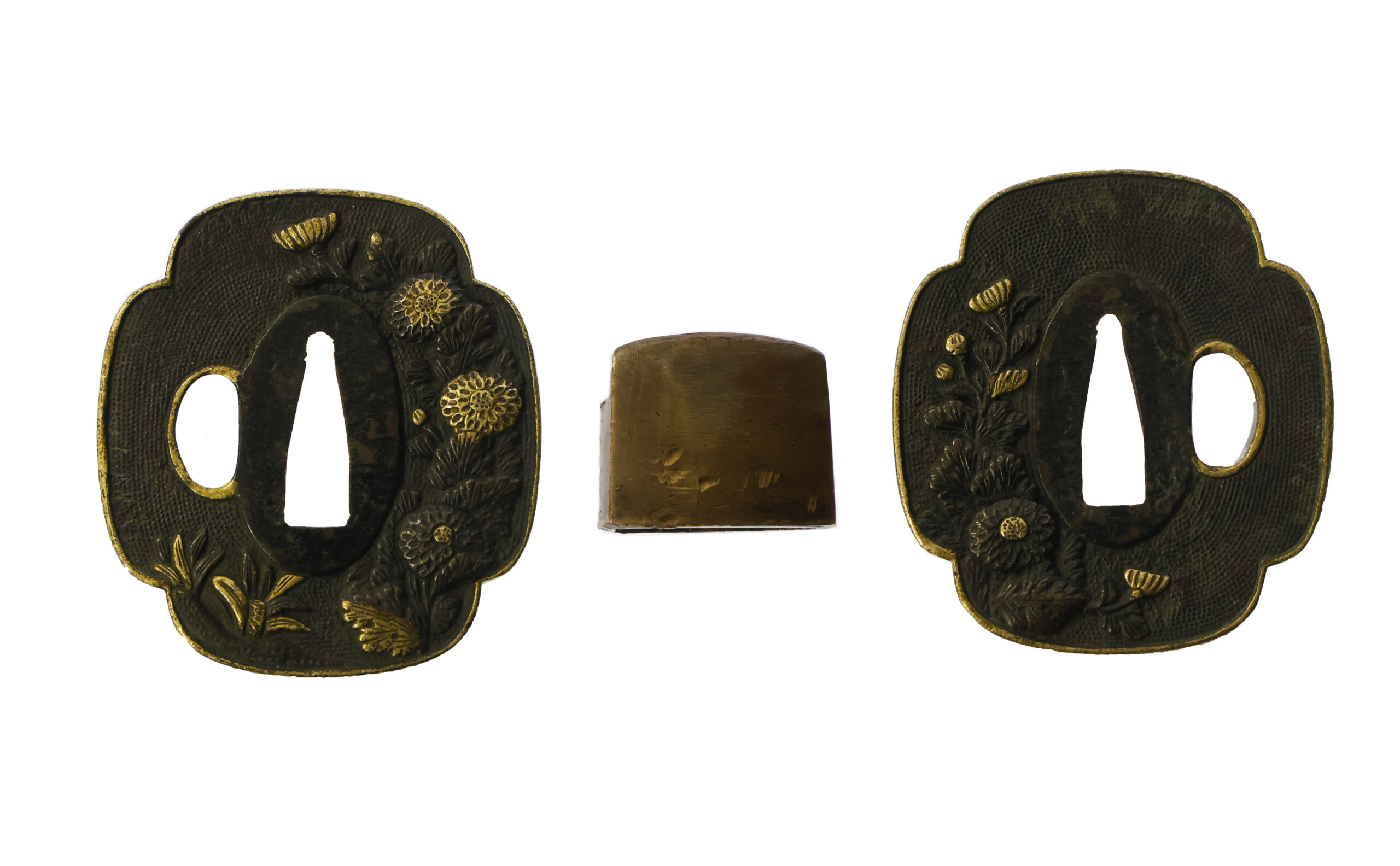
Kozuka:Kozuka is a small knife stored in Kozuka Hitsu(groove of the sheath of the Japanese sword).
The kozuka features a nanako-ji (魚々子地, fish roe–pattern) ground, upon which a plant resembling kikyō (桔梗, Japanese bellflower) is depicted together with a feather broom (羽根箒, Hanebouki).
In Japan, the kikyō is one of the traditional flowers of autumn and has been admired since ancient times for its simple yet elegant five-petaled form. It frequently appears in classical poetry and family crests, and in the language of flowers it symbolizes sincerity and unchanging love.
The feather broom, traditionally made with bird feathers bound to a handle, was used in Shinto rituals and for dusting delicate objects such as artworks or altars. In a decorative context, it can carry connotations of purity, cleansing away dust or spiritual impurity.

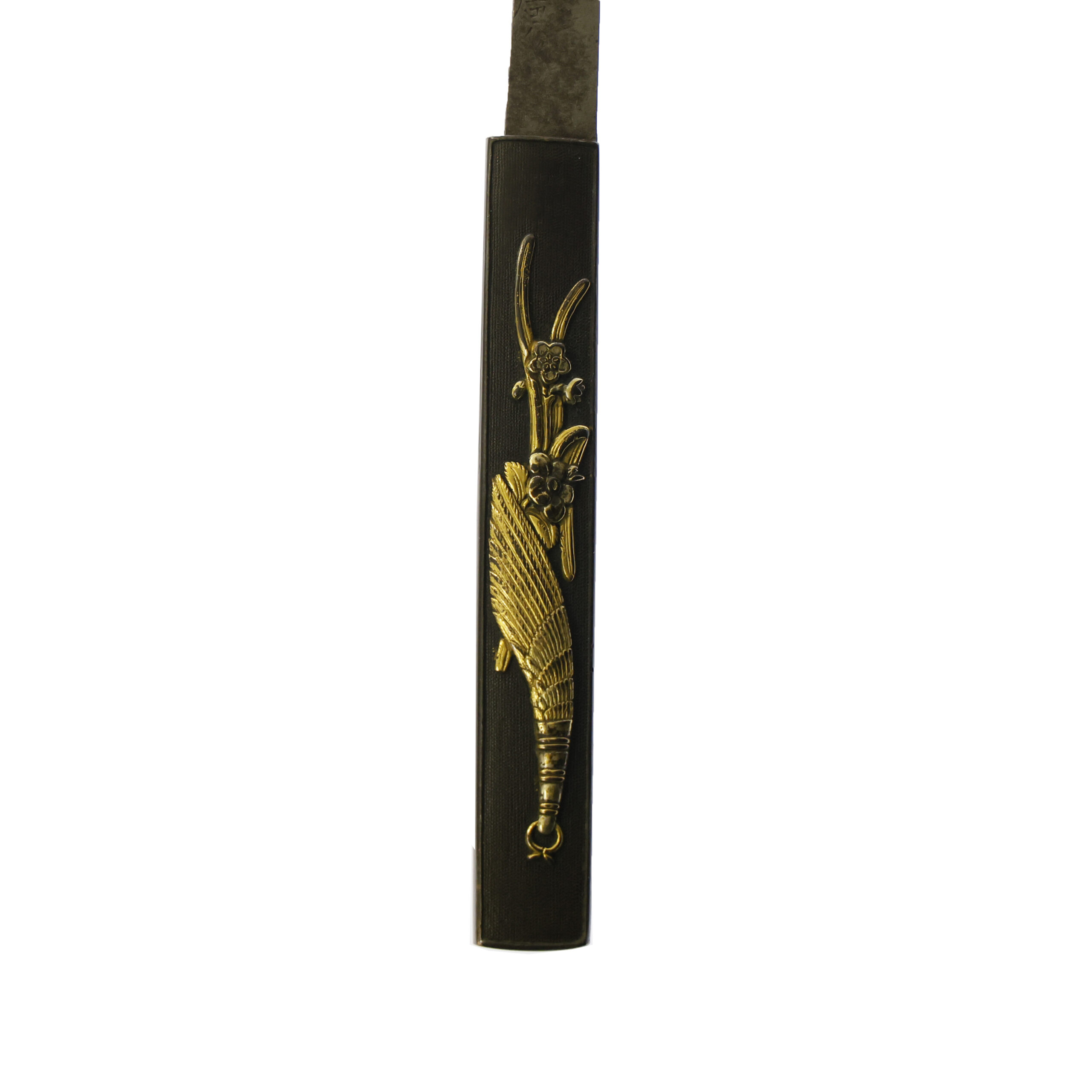
Saya: Saya is the scabbard for the Japanese sword.
The saya is finished in the umekawa same style with a black togidashi lacquer. Umekawa same (梅花皮鮫) refers to the use of ray skin with a natural pattern resembling plum blossoms, prized for both its beauty and durability. In the togidashi (“polished-out”) lacquer technique, layers of lacquer are applied over the ray skin and then carefully polished to reveal the raised texture beneath, creating a smooth yet subtly patterned surface.
*Please note: a portion of the ray skin surface is missing due to a small area of loss.
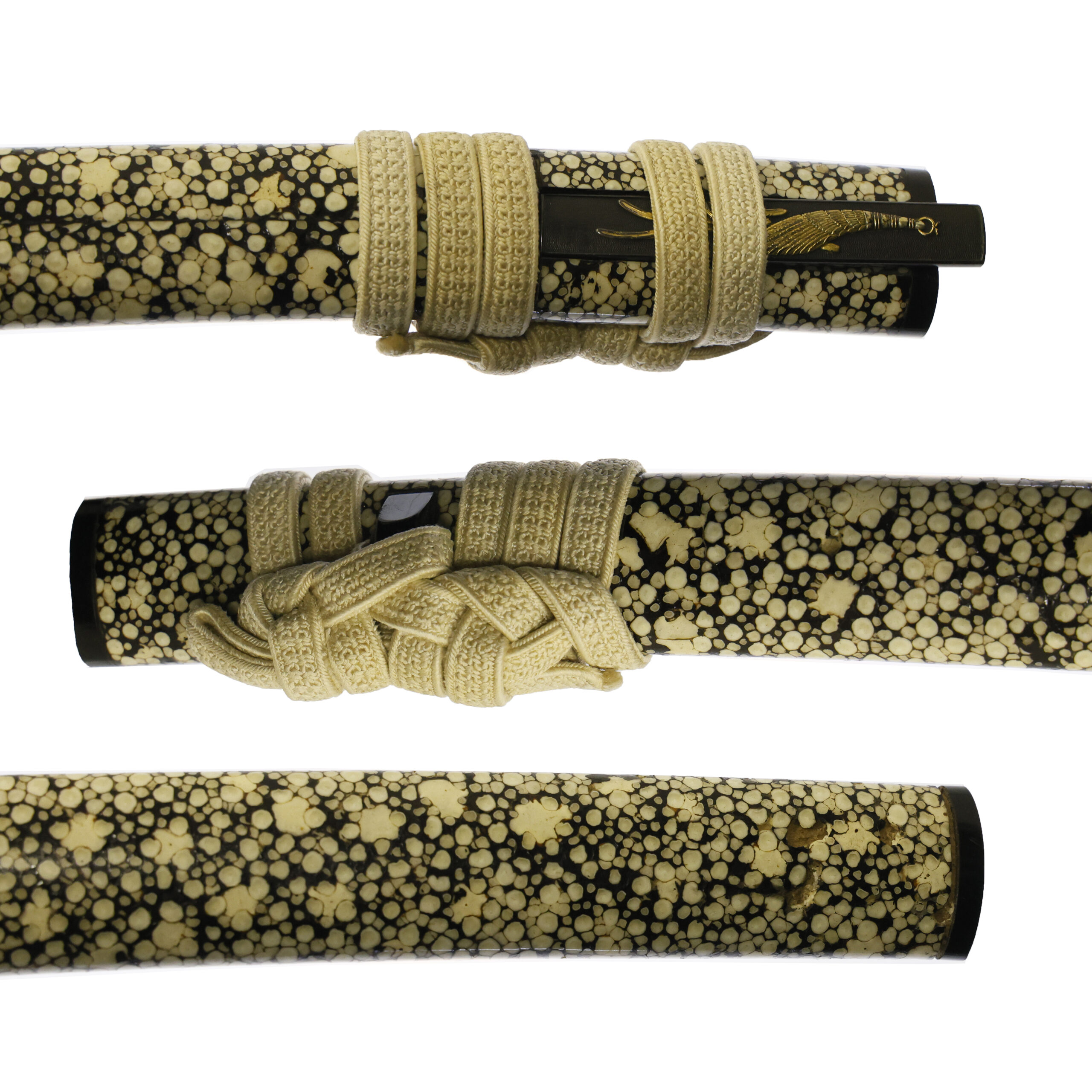
Authentication Paper: NBTHK TOKUBETSU Hozon Certificate for the blade (No. 1023371)
NBTHK, also known as Nihon Bijutsu Touken Hozon Kyokai (the Society for the Preservation of the Japan Art Sword), is one of the oldest Japanese sword appraising organizations in modern-day Japan. They authenticated the blade on December 4th in the 6th year of Reiwa (2024). They appraised it as Tokubetsu Hozon Touken, the blade especially worth preserving for Japanese society. The purchaser will receive this original certificate as well. We can also translate what is written into English and make a PDF file for your record if you request.

Registration Number: Yamagata 15624
The Board of Education in Yamagata prefecture issued a registration paper for this sword . It is called Jyu Hou Token Rui Tourokusho (銃砲刀剣類登録証). Bunkacho (The Agency for Cultural Affairs) acknowledges a Japanese sword with this paper as a work of art.
The sword needs to be traditionally hand-forged and made of Tamahagane carbon steel to be registered in the system. With this paper, its owner in Japan can legally own an authentic Japanese sword. Based on this registration number, we will apply for its export permit.
This paper will need to be returned to the board of education when the sword is being shipped abroad, but you can receive a copy of it. An English translation of this registration paper is available on request.
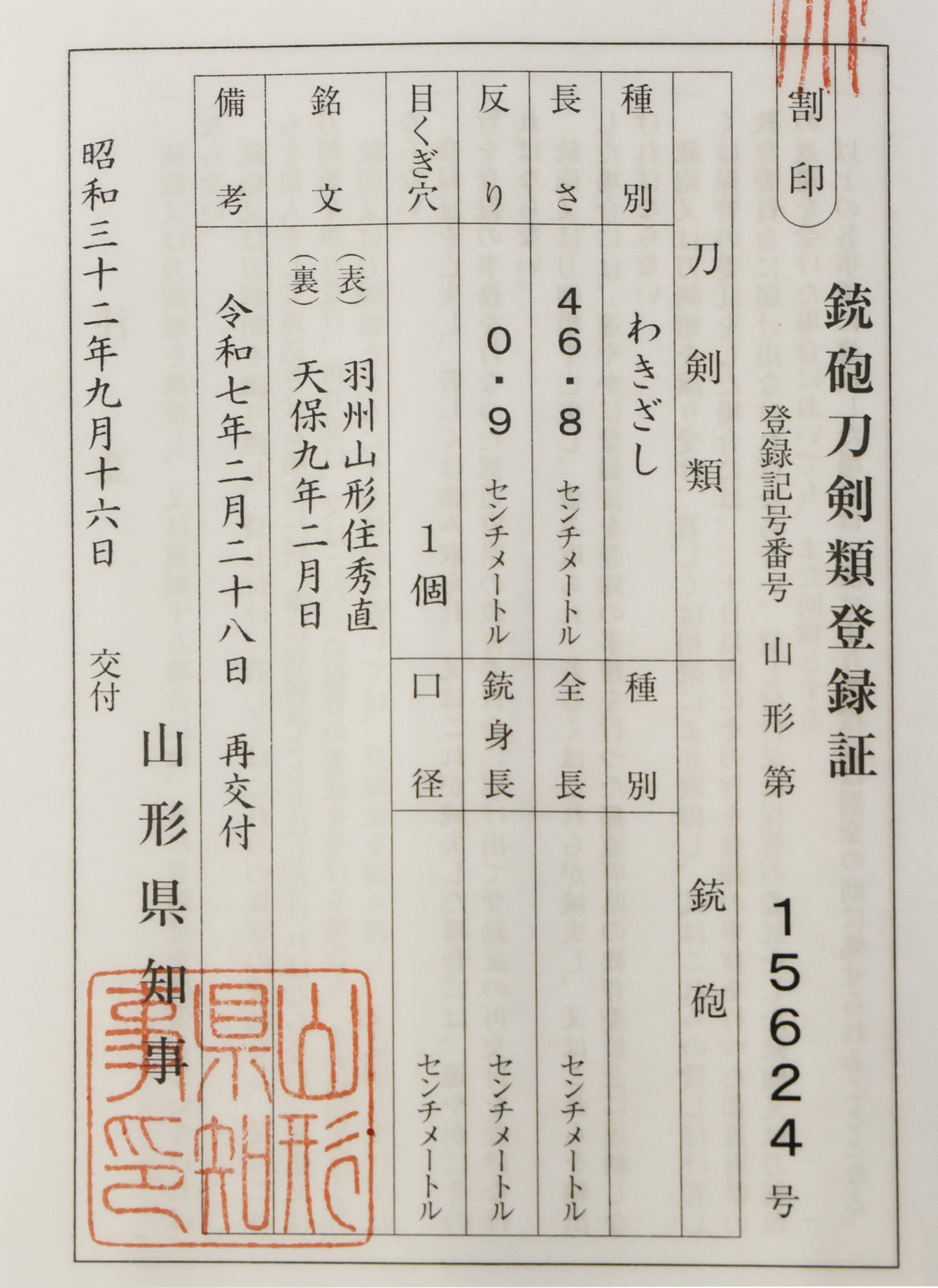

【About us】
Samurai Museum is located in Tokyo, Japan, exhibiting antique artifacts related to the Samurai history. Samurai Museum Shop is the place for those who are interested in Japanese culture and craftsmanship. We deal with antique Samurai swords/armor, traditional crafts made in Japan and so on.
【Japanese Sword& Export Process】
The Japanese swords we deal with are hand-forged edged swords made in Japan. It was made from the traditional carbon steel called TAMAHAGANE(玉鋼). Samurai Museum is familiar with the proper legal procedure for an antique/ authentic Japanese sword to be exported from Japan. We have sent more than 1000 Japanese swords for the past few years (~2025) to amazing owners who appreciate its historical value.
Each Japanese sword is registered under the Agency for Cultural Affairs and the Board of Education in Japan. They issue a registration paper for each Japanese sword for its owner in Japan to legally possess it. The Japanese sword with its registration paper means it was traditionally hand-forged in Japan.
To legally export the sword from Japan to other countries, we will have to apply for its permit to the Agency for Cultural Affairs(Bunkacho) and return the original registration paper to the Board of Education. It normally takes around 2-4 weeks to receive this permit after submitting required documents. And we would like you to expect at least 1-1.5 months for your order to arrive at your given address after you ordered. For more detailed info, please click here.
It is allowed for residents in Japan to own authentic Japanese swords without a special license as long as they come with registration papers. Please feel free to contact us if you are a resident of Japan, whether temporarily or permanently. We will also assist you when you leave Japan and need to obtain the export permit.
【Payment Method】
We accept payment through Stripe (Credit card), PayPal, Apple Pay or ChromePay, all of which are secure payment methods. Also, you don’t need to make an account on Stripe for the checkout. If you prefer other payment method, please contact us. After confirming your payment, we will apply for an export permit. You may either pay in JPY, USD, AUD, CAD,EUR CHF or GBP. The price is set in Japanese Yen. Prices in other currencies are automatically calculated based on the latest exchange rate.

* If the amount is above 1 million JPY, Stripe or wire transfer will be the only options for payment.
【Shipping】
We have shipped authentic Japanese swords to the USA, UK, Canada, Mexico, Germany, France, Hong Kong UK, and Australia. If you don’t live in these countries and like to order, please contact us first before making a purchase. We offer Free International Shipping as long as we can send antique Japanese swords by EMS.
We normally ship by EMS(Express Mail Service) provided by Japan Post. We will send you a tracking number for your order as soon as we hand it to the post office. We will put 100 % insurance on the shipping document without any extra charge. Based on the total amount, there might be a duty tax or other fee for you to pay, depending on the countries. We use package cushioning to protect the item and put it in a PVC pipe, which is one of the most secure packages because of its durability.
It will normally takes 5-14 days for the item to arrive at your given address after we dispatch it. Time of delivery is estimated as accurately as possible by the carrier but does not take into account any delays beyond our control such as by inclement weather, post office holiday seasons.
* If you live in Australia and like to purchase an authentic Japanese sword, please click here to know the detail.

【Review】
Here is one of the reviews we received from a customer who purchased an authentic Japanese sword from us. For more reviews, please click here.
“My experience overall with the whole process was wonderful. I had many questions about the history and process to purchase these treasures. All my questions were answered very timely and complete. The staff is very knowledgeable and very well versed if any questions do arise.”
【How to make sure the condition】
Please keep in mind that what you are going to purchase is an antique item. We uploaded high resolution photos for you to check its condition thoroughly. If you like to see more photos with different angles, please feel free to contact us. We will be happy to send them to you so that you can make informed decision. It is essential for us to know that you are happy with your choice of a sword. and we are prepared to use the best of our ability to serve you.
【How To Contact Us】
Please contact us through email, Facebook Messenger or Live Chat if you have any questions. You can find each icon on the right side of the website. Please click one of them to reach us. We will reply to you within 1-2 business days.
【The Art of Nihonto (Japanese Sword)】
Samurai’s history is a profound, eloquent legacy of ancient Japanese warriors in which millions of people worldwide are being fascinated. If you like to find out the art of Nihonto, please click here.
【A Guide to Japanese Sword Maintenance】
After acquiring an genuine Japanese sword, it is also important to know how to take good care of it. Here is the special video for you. Mr. Paul Martin, Japanese sword expert, shows you how to give proper maintenance to your sword. By mastering how to clean the Japanese sword, its aesthetic beauty will last forever.
When you purchase a Japanese sword from us, you can get a Free Japanese sword maintenance kit. It comes with four tools(Choji Oil, Uchiko Whetstone Powder, Peg remover, Oil Applicator). By watching the video instruction above , you can enjoy learning how to maintain your Japanese sword while appreciating it. If you have any difficulty assembling the sword or cleaning the blade, you can feel free to contact us.
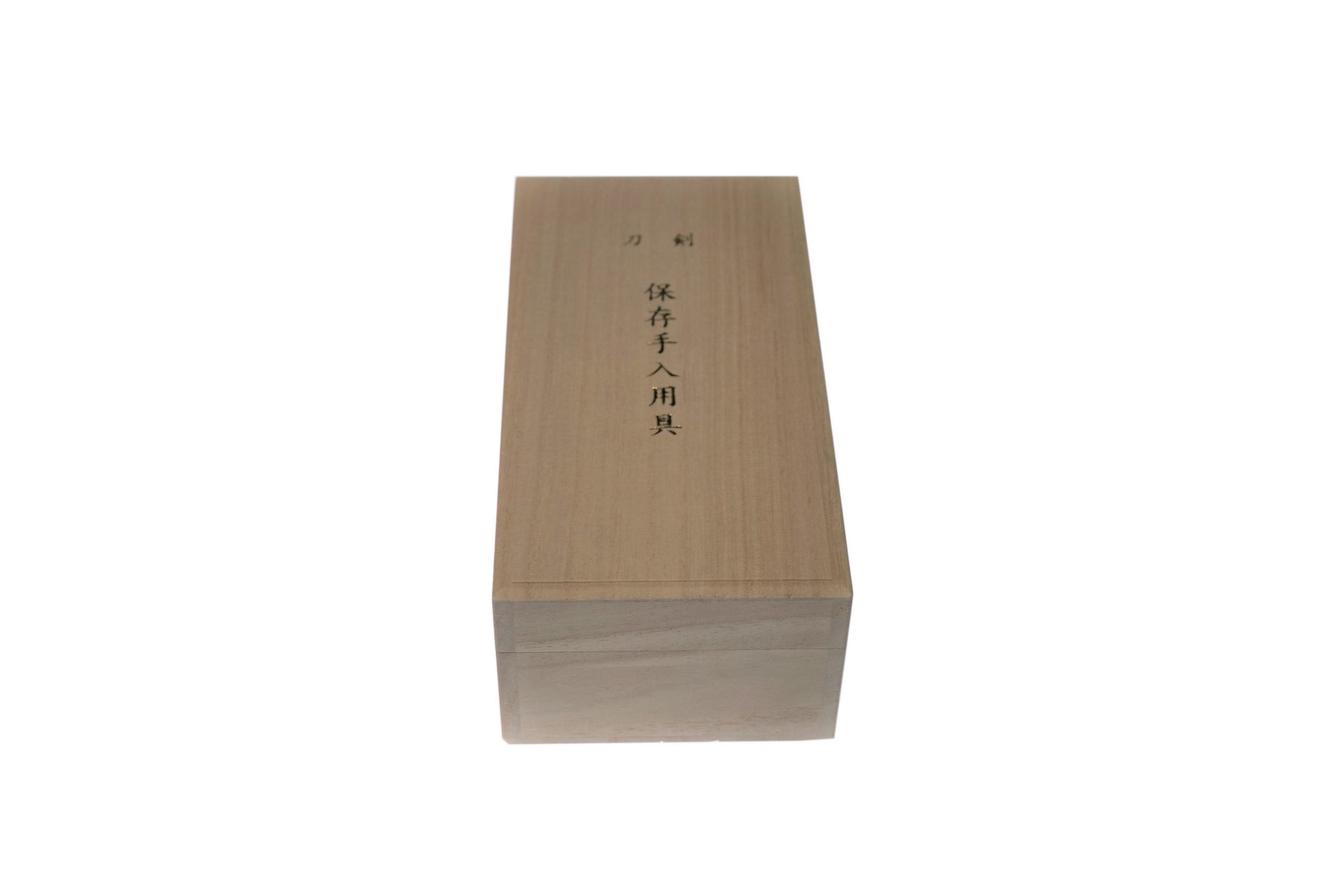
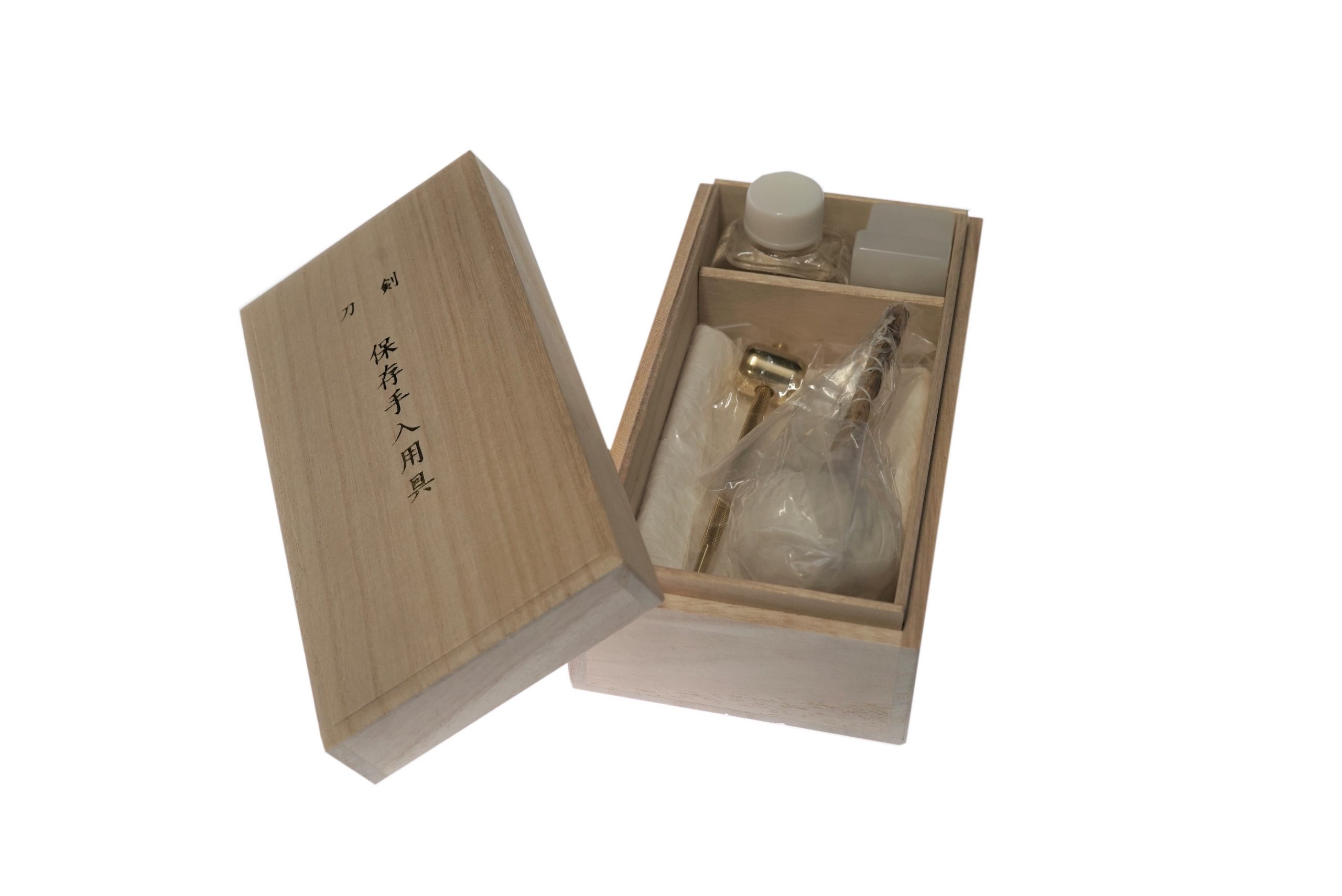
MORE ANTIQUE JAPANESE SWORD FOR SALE
SWORDS WITHOUT CERTIFICATES FOR SALE
LEARN JAPANESE SWORD TERMINOLOGY
Thank you for reading all the information on the page. If you have any difficulty choosing the right Japanese sword for you, we will be more than happy to help you find the one that speaks to you the most. Please feel free to contact us.
